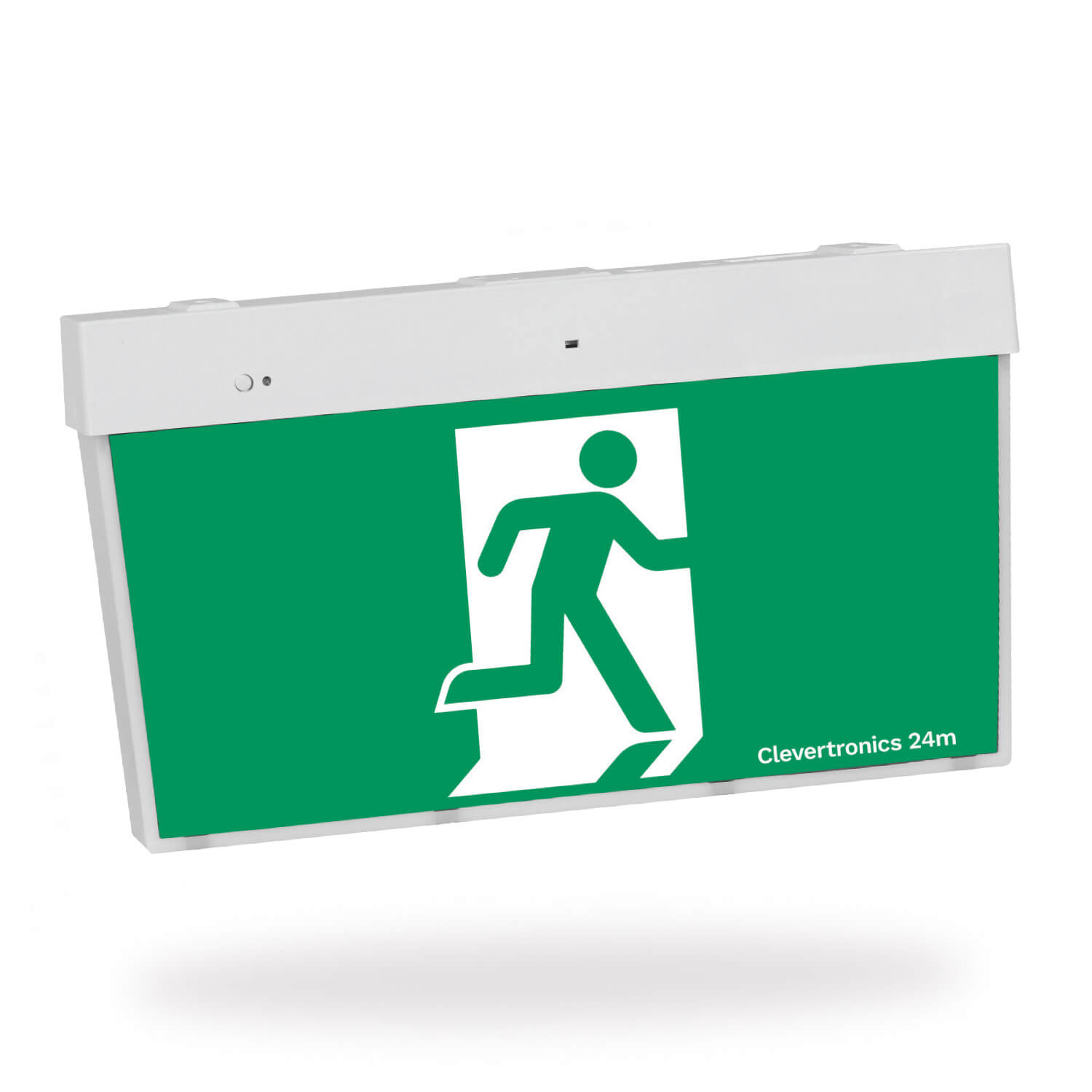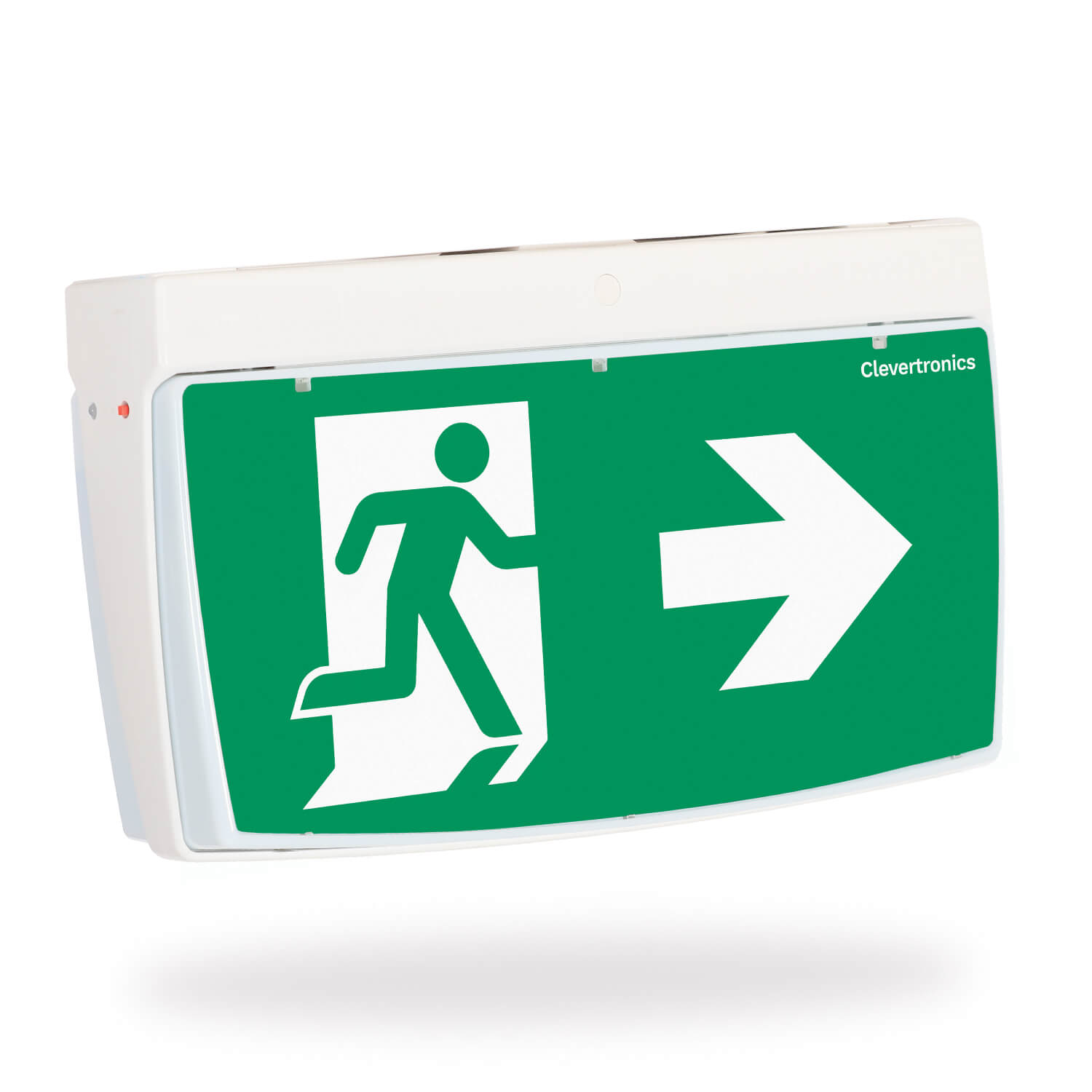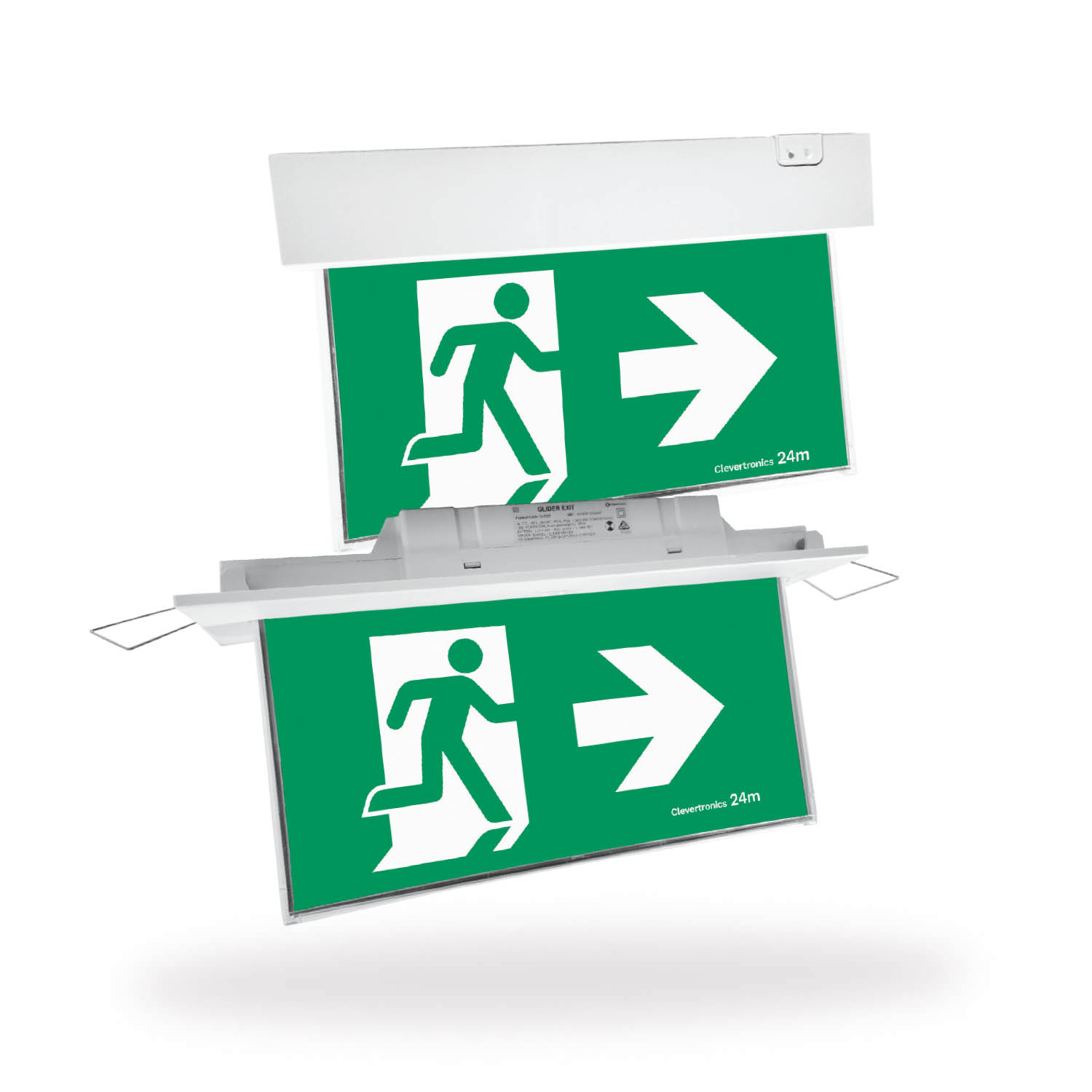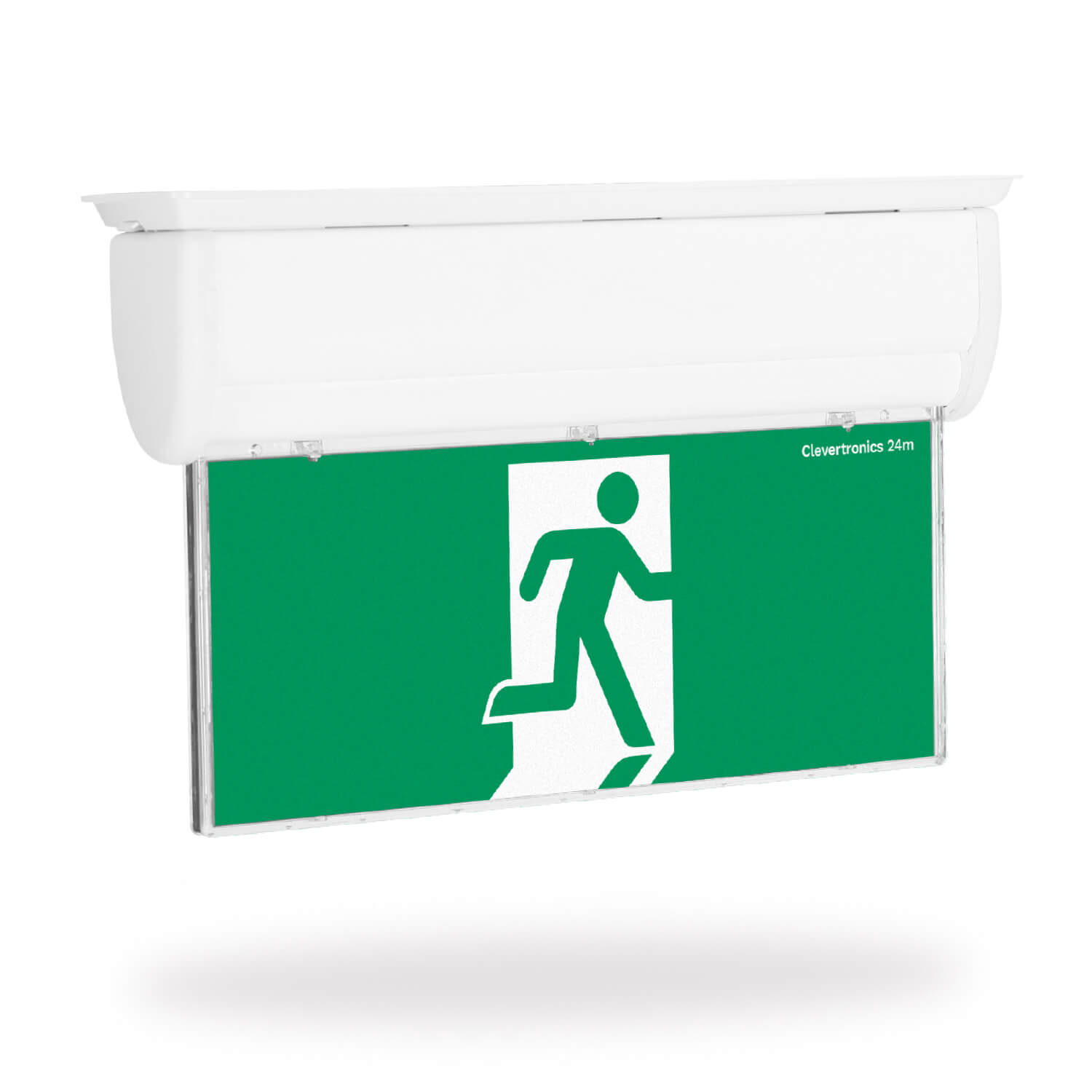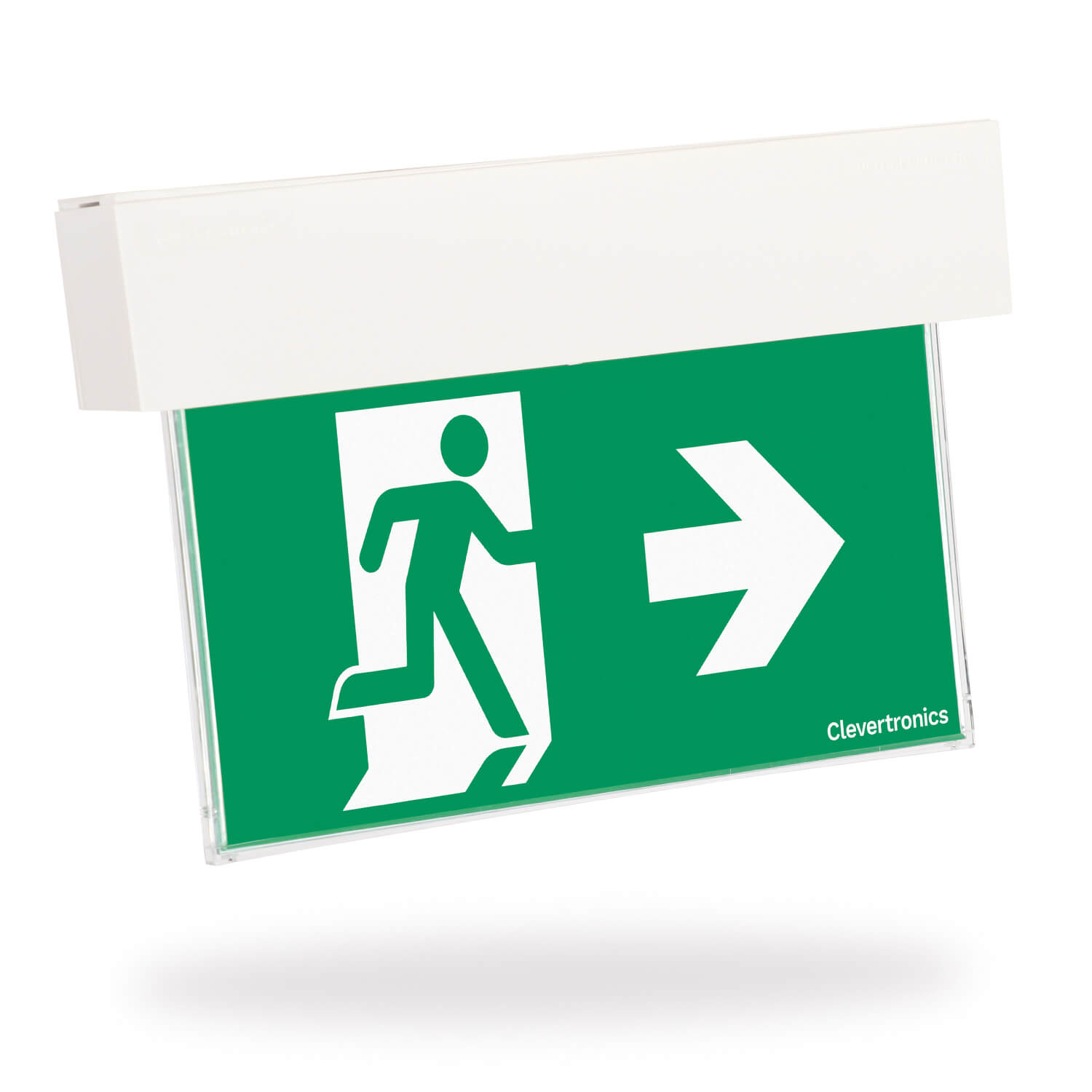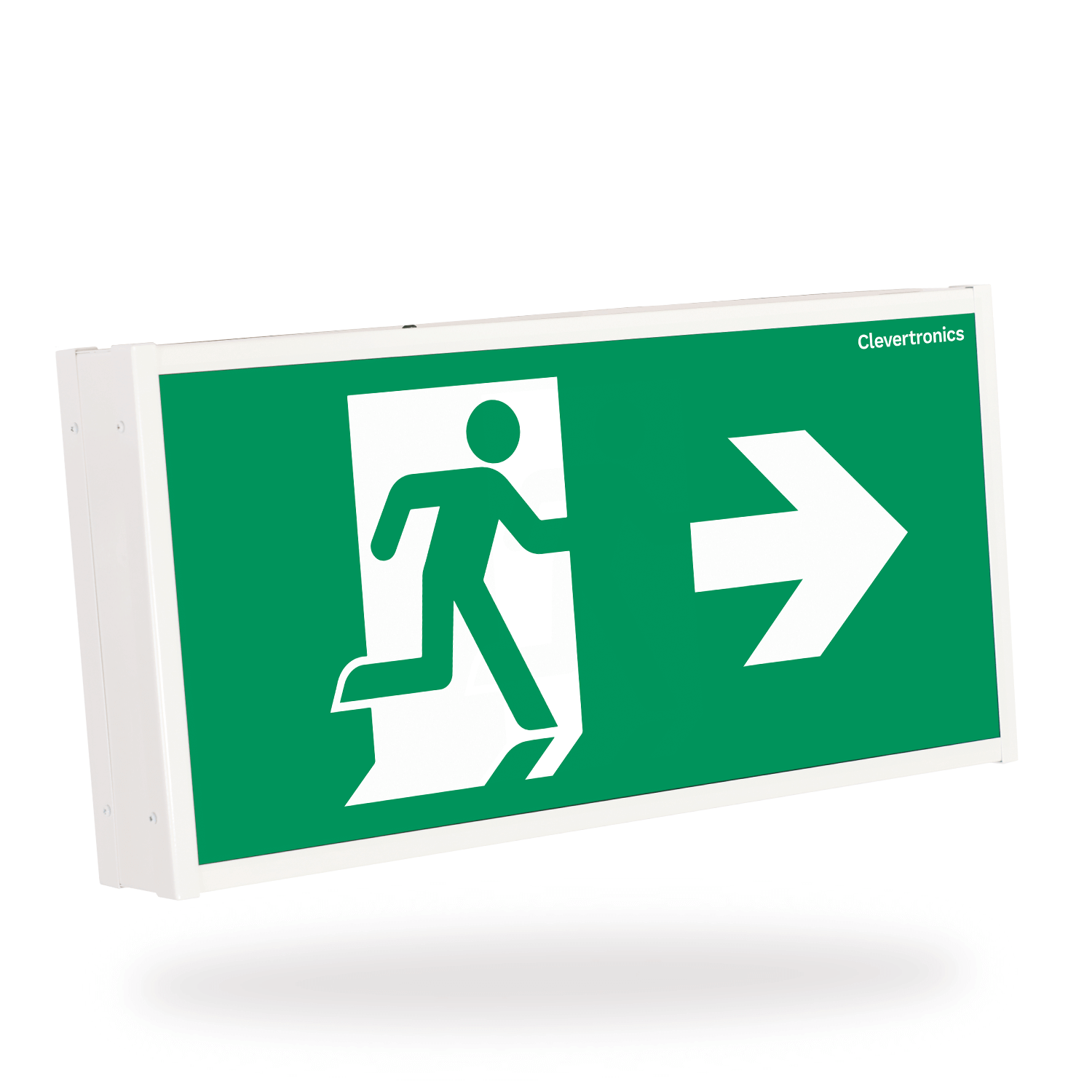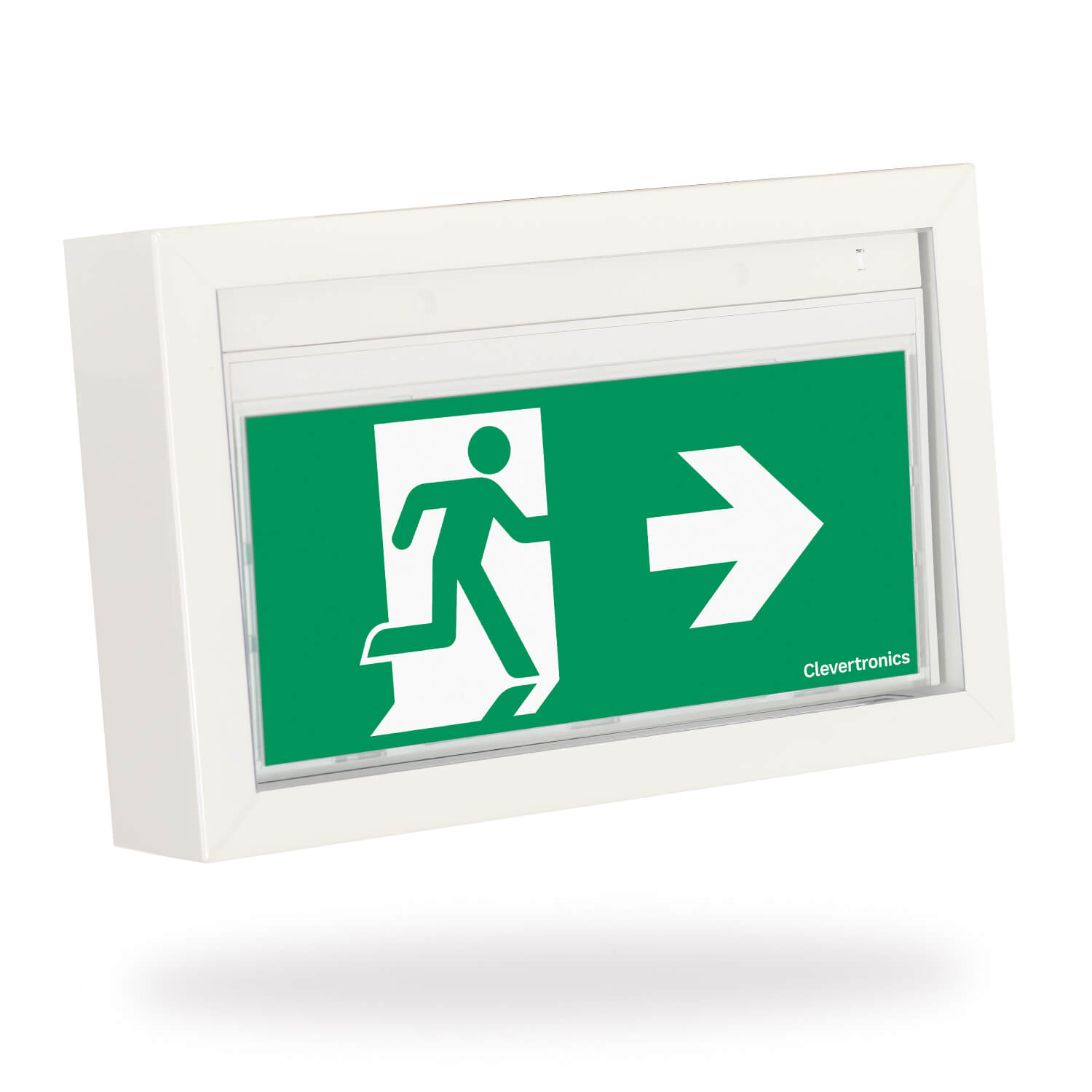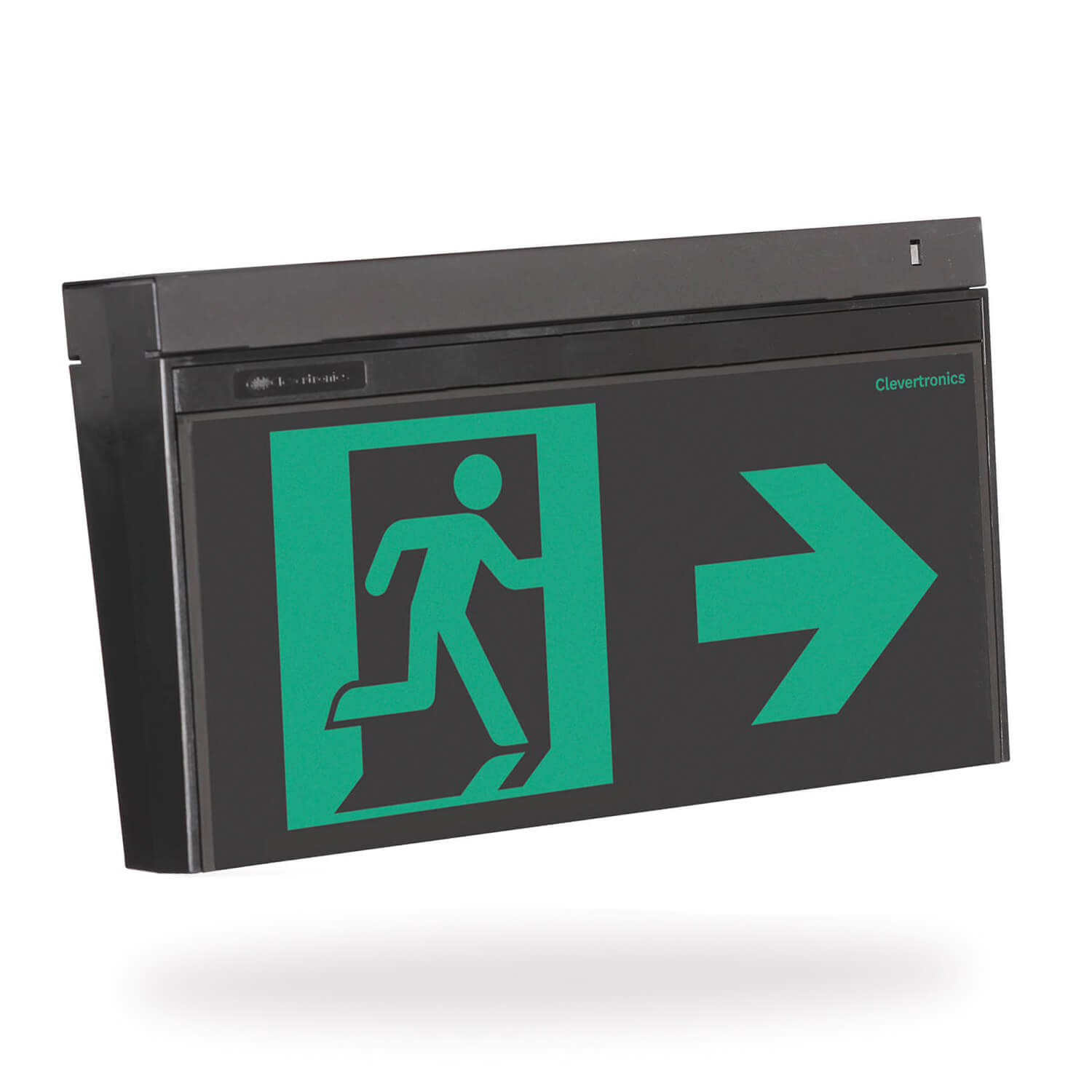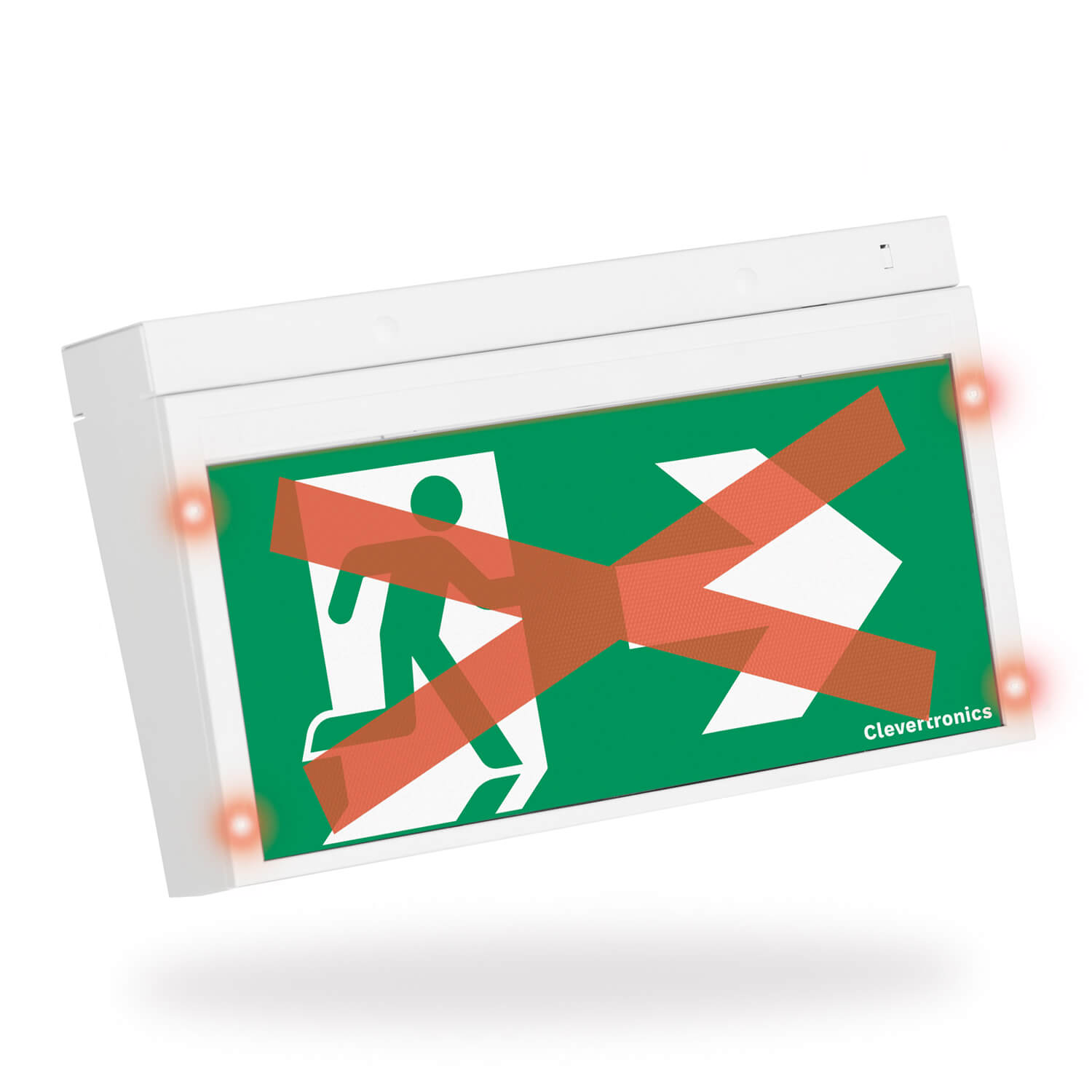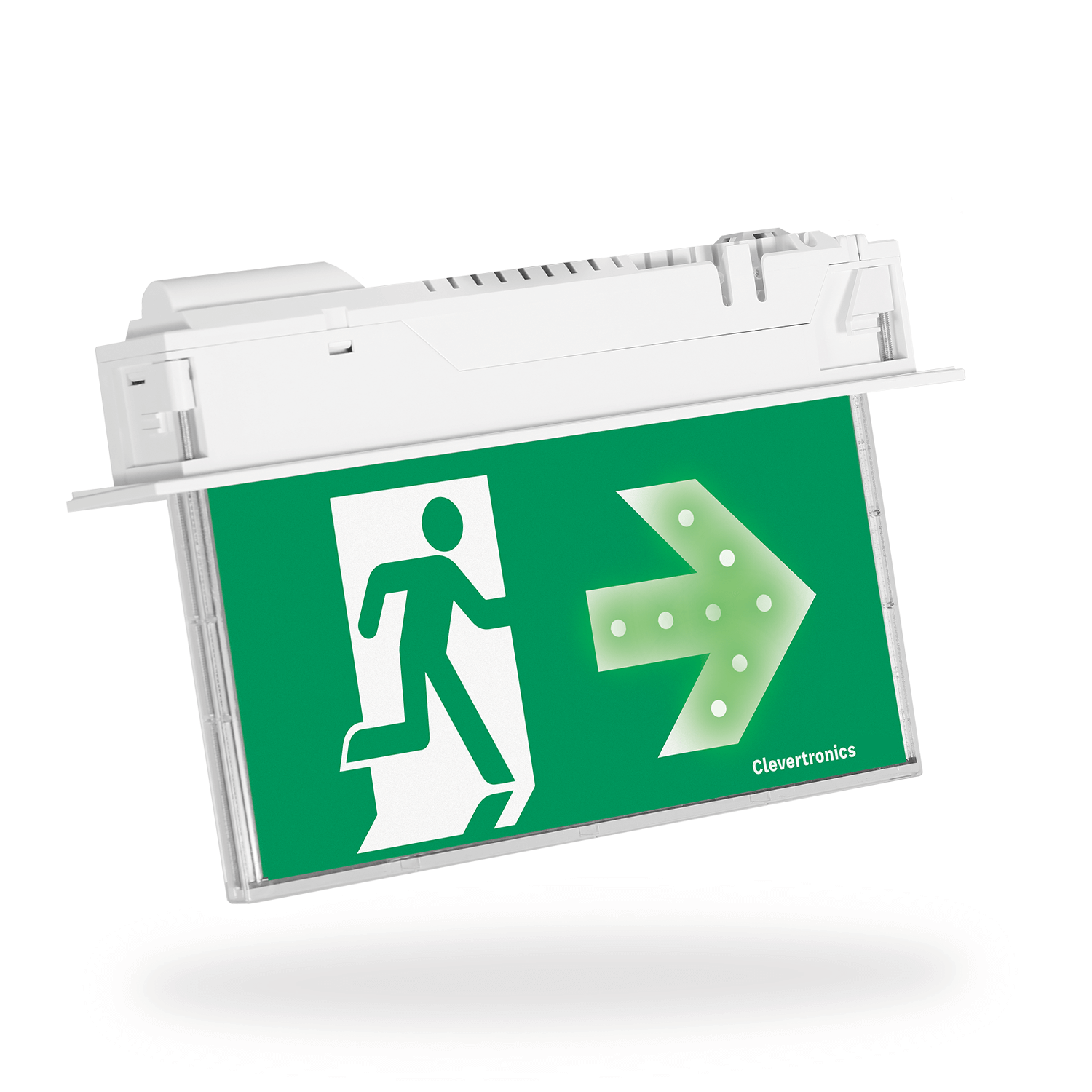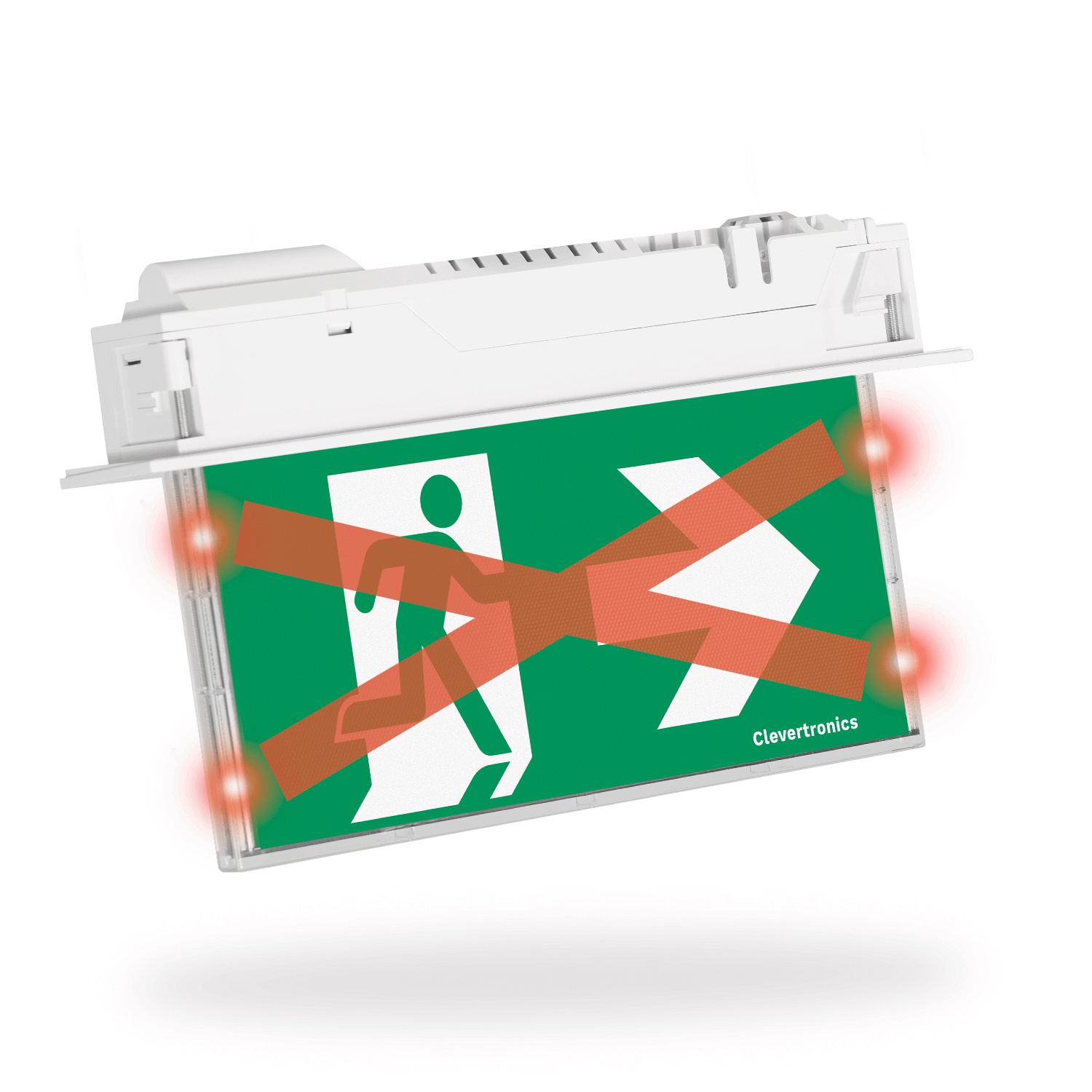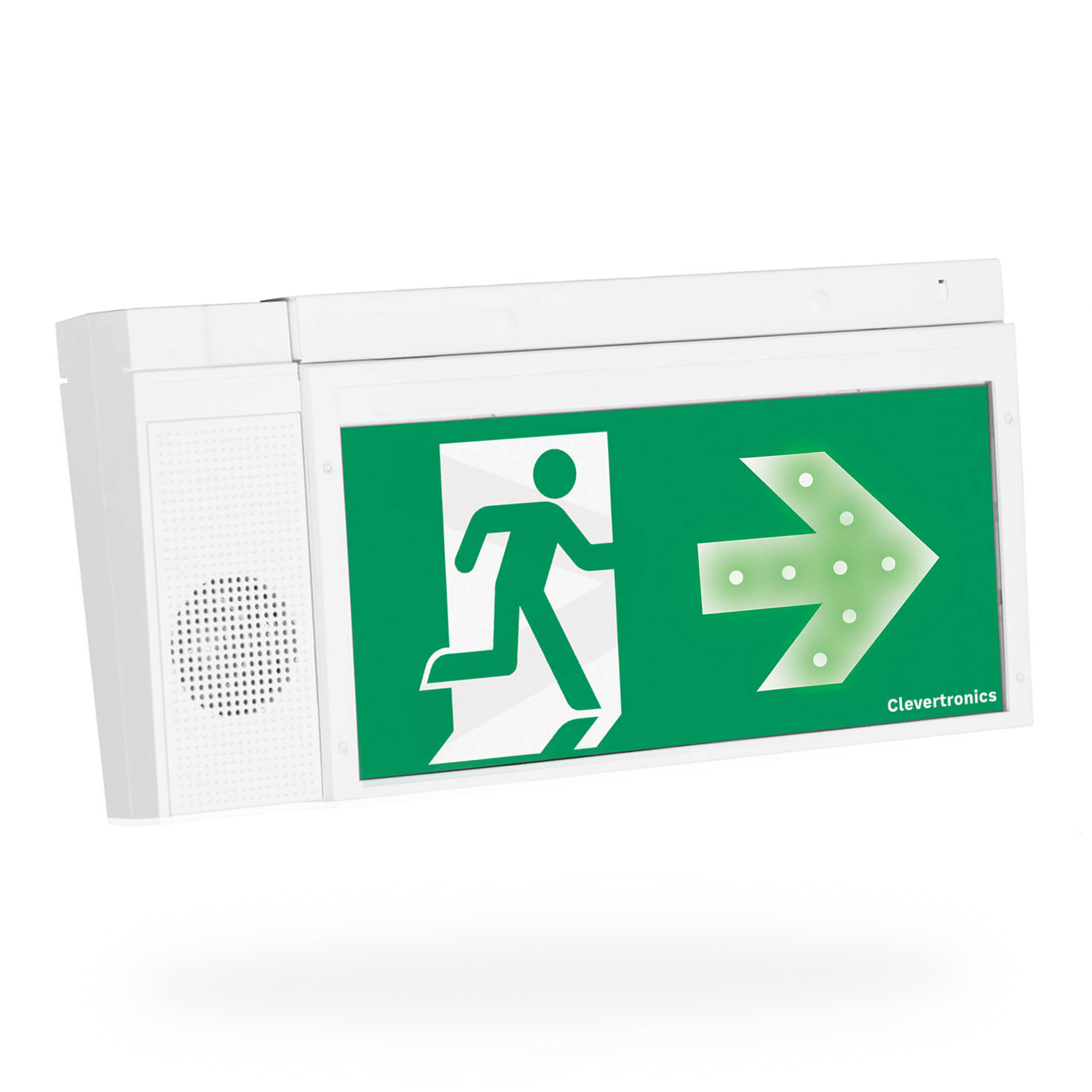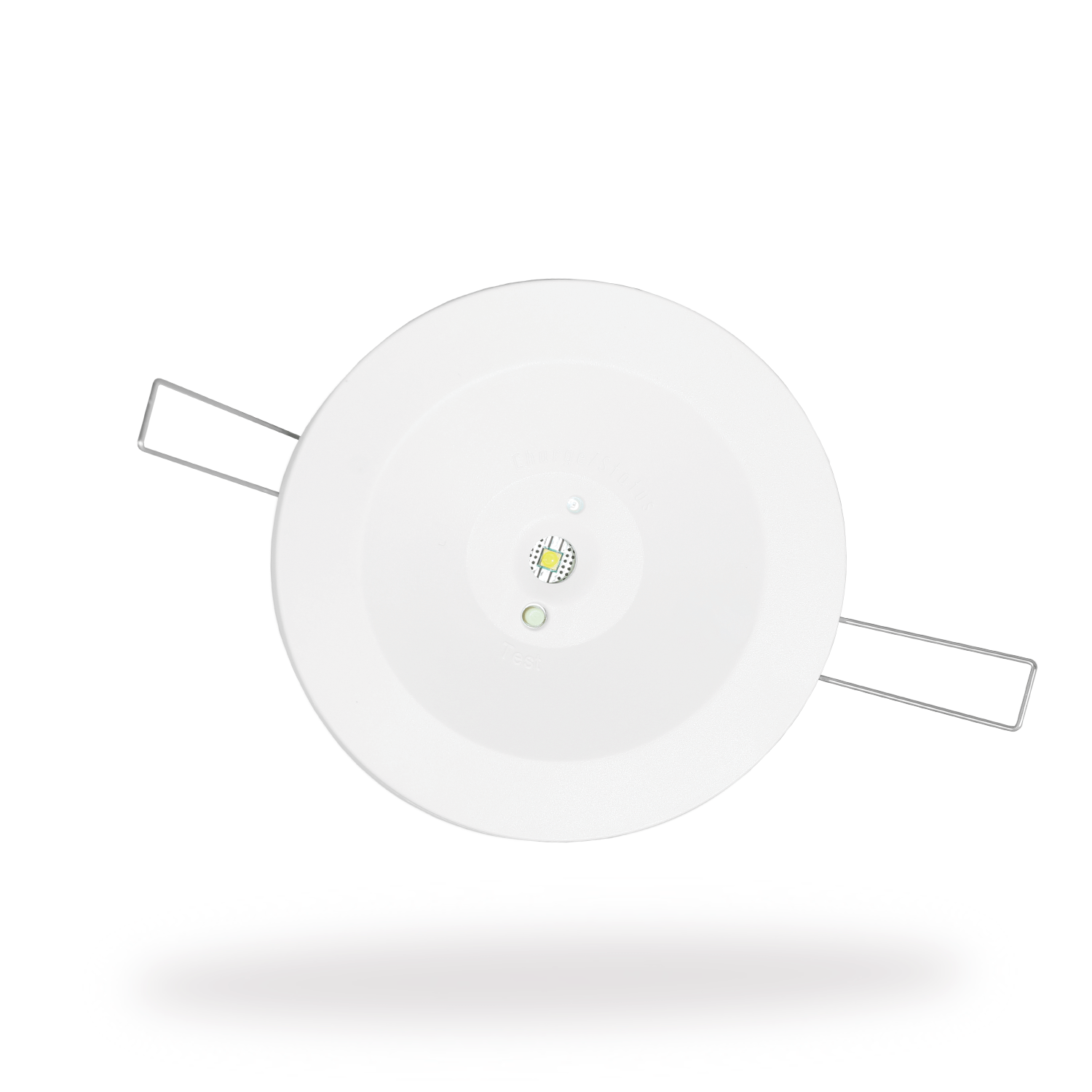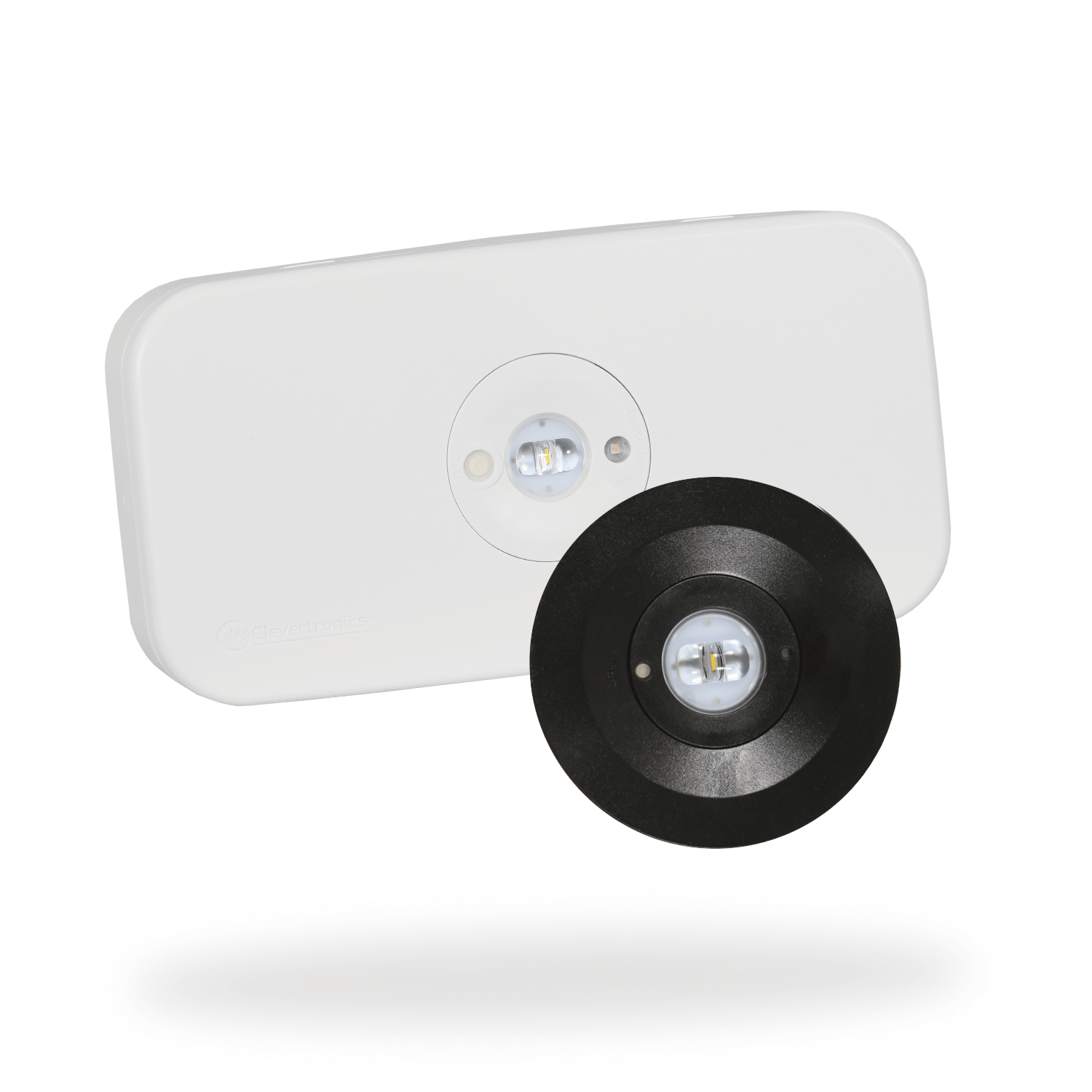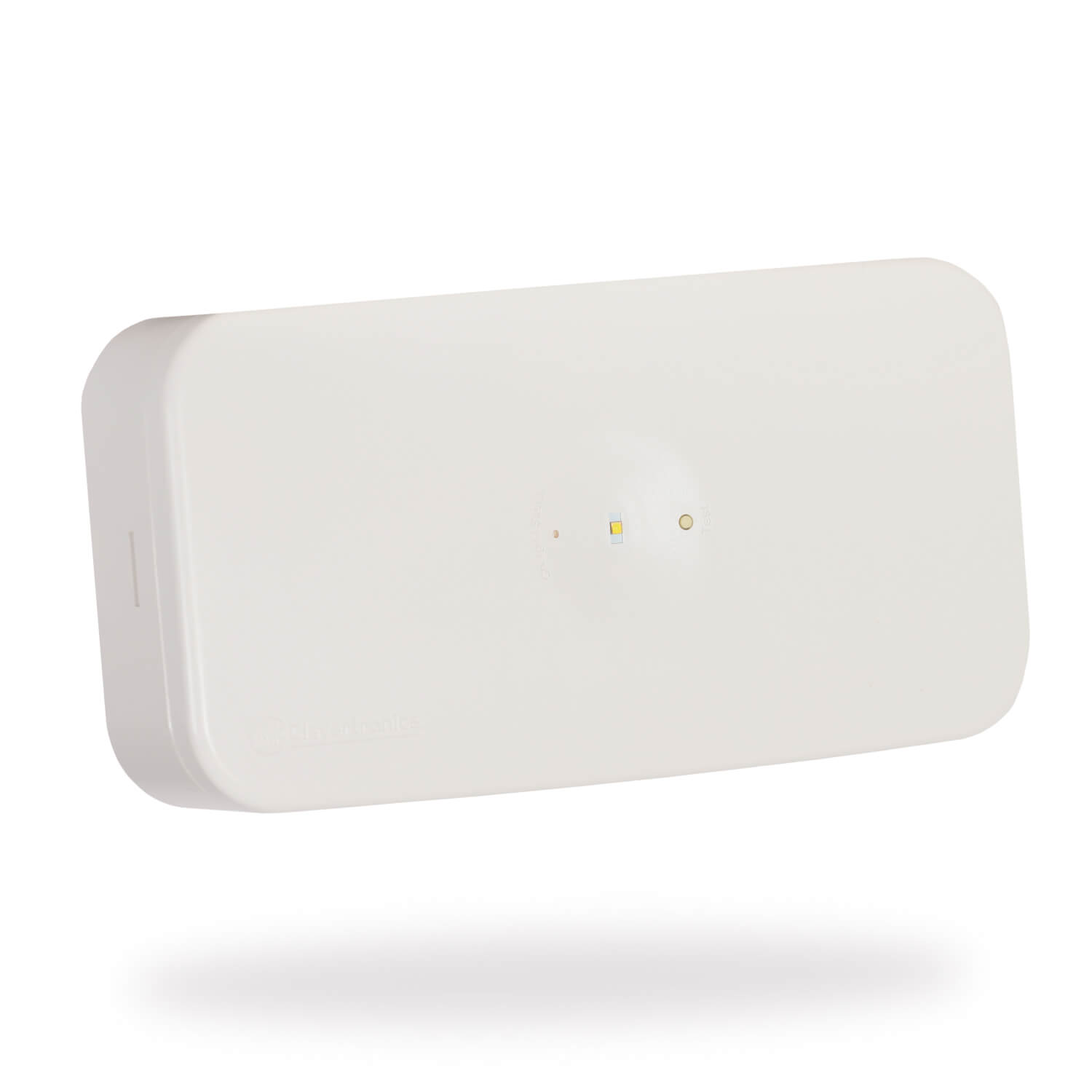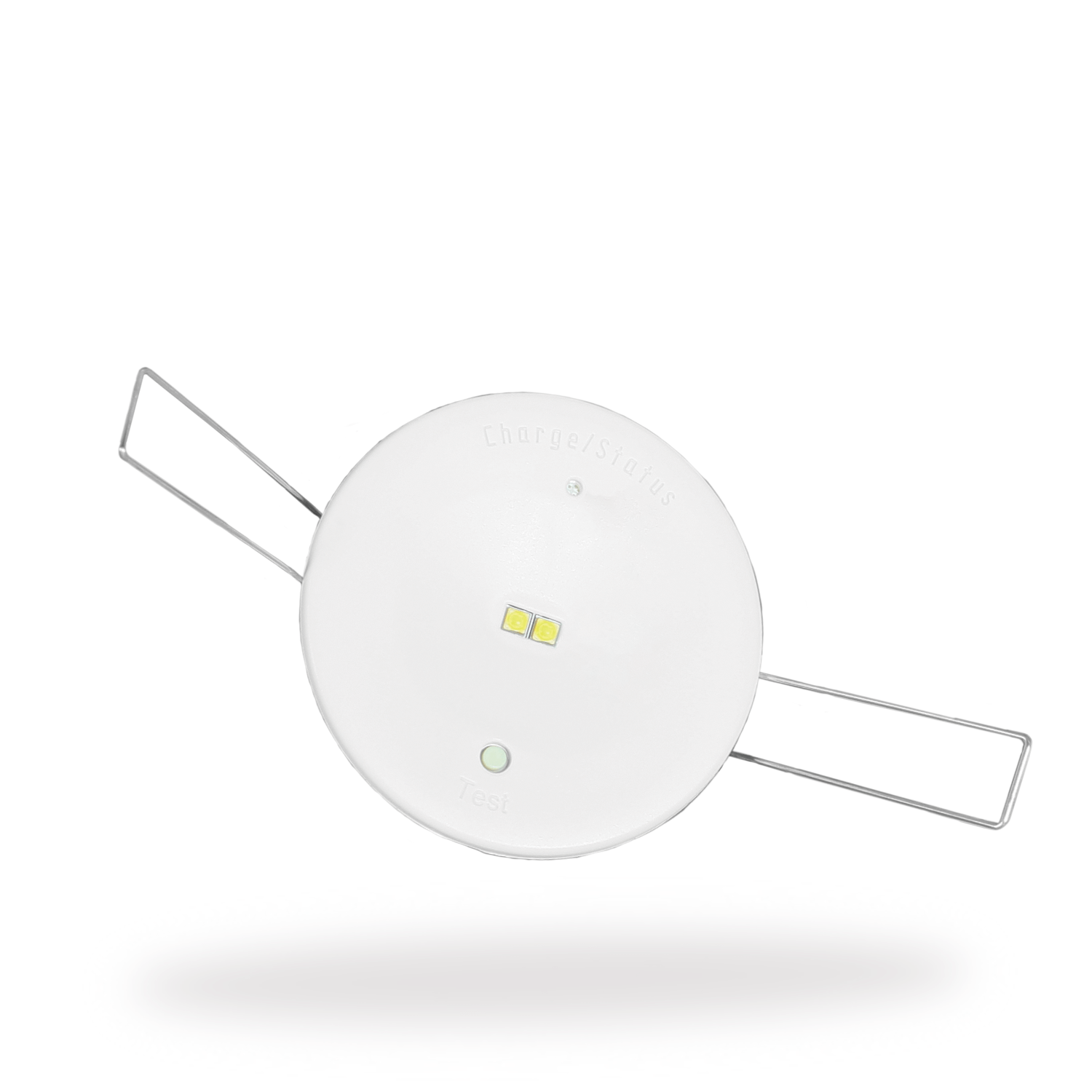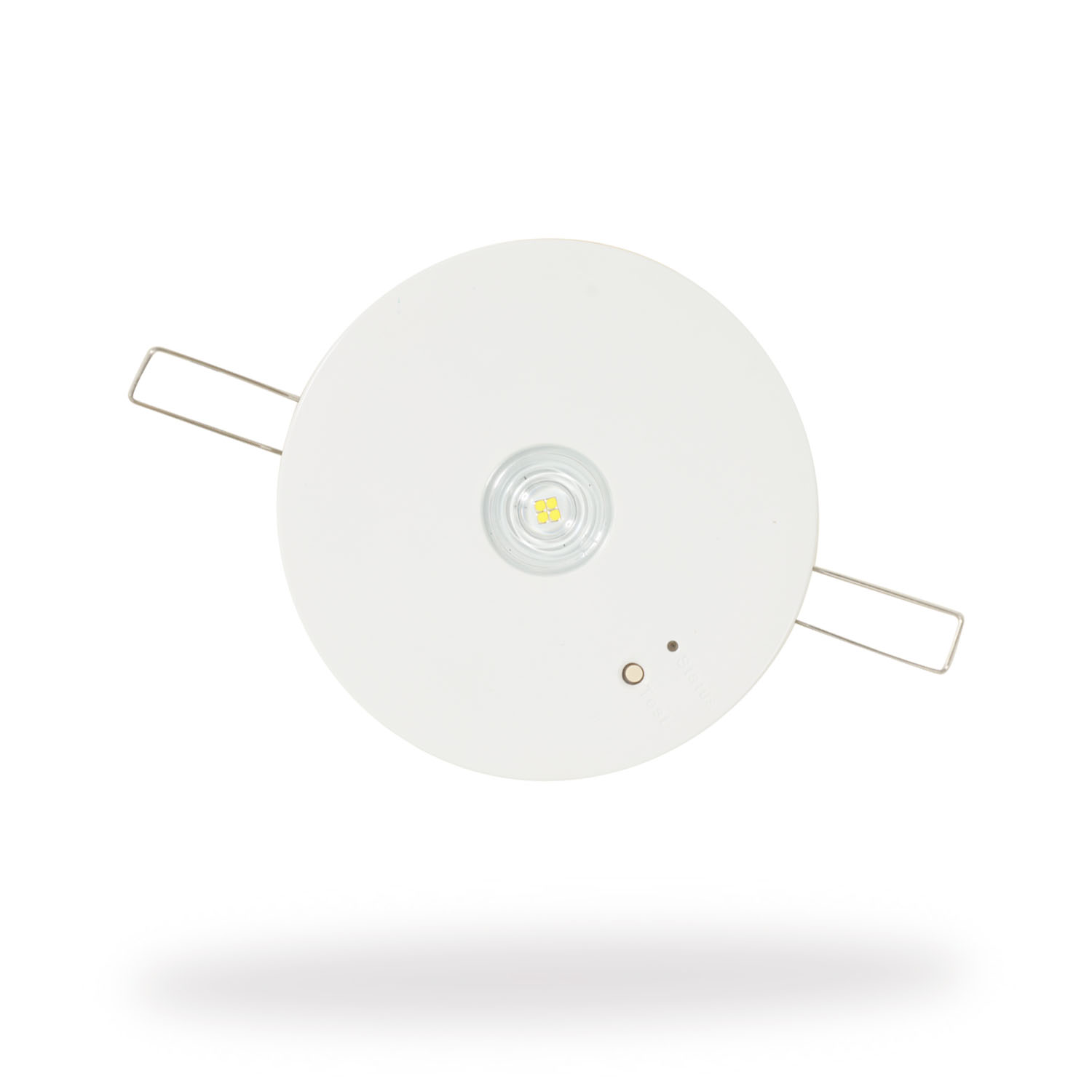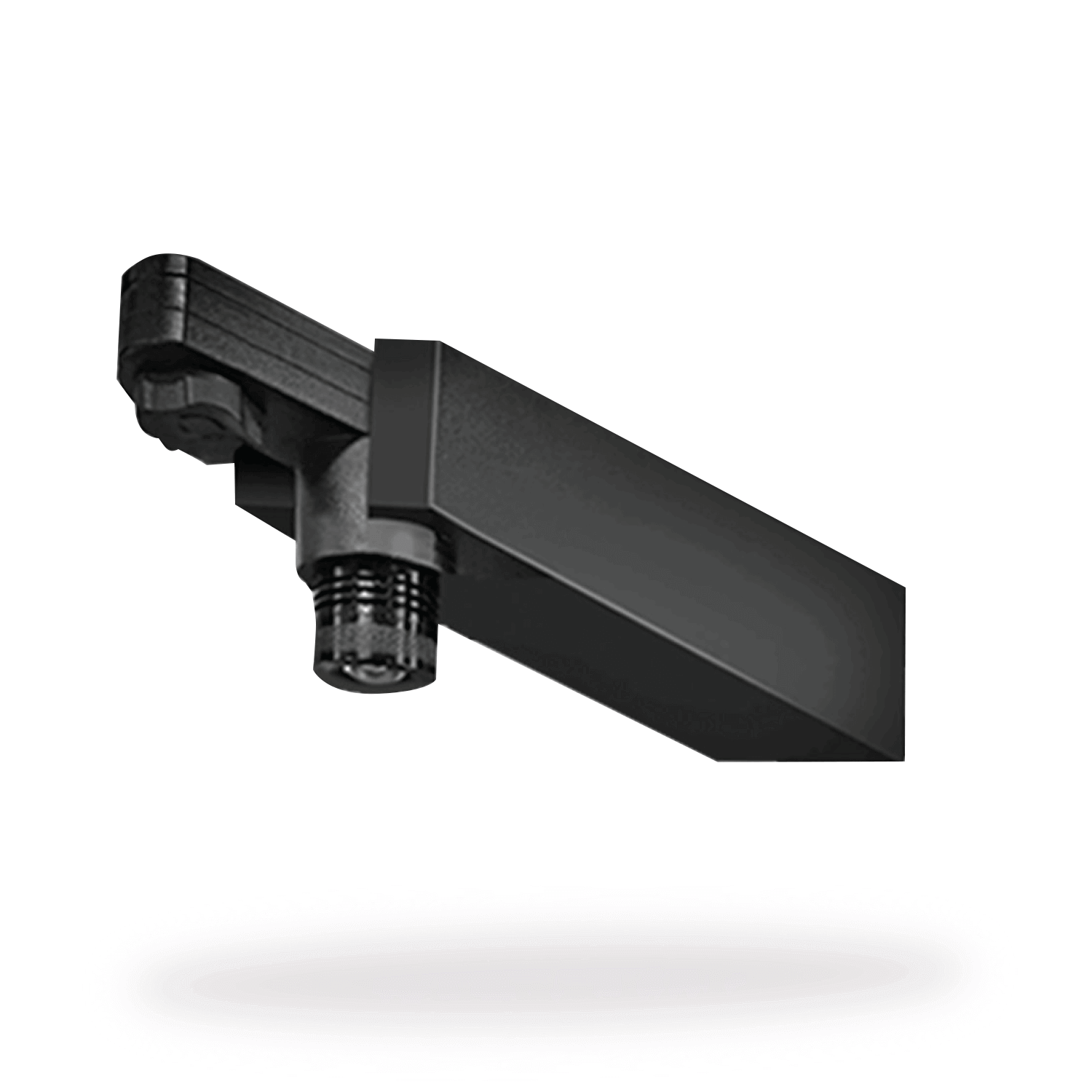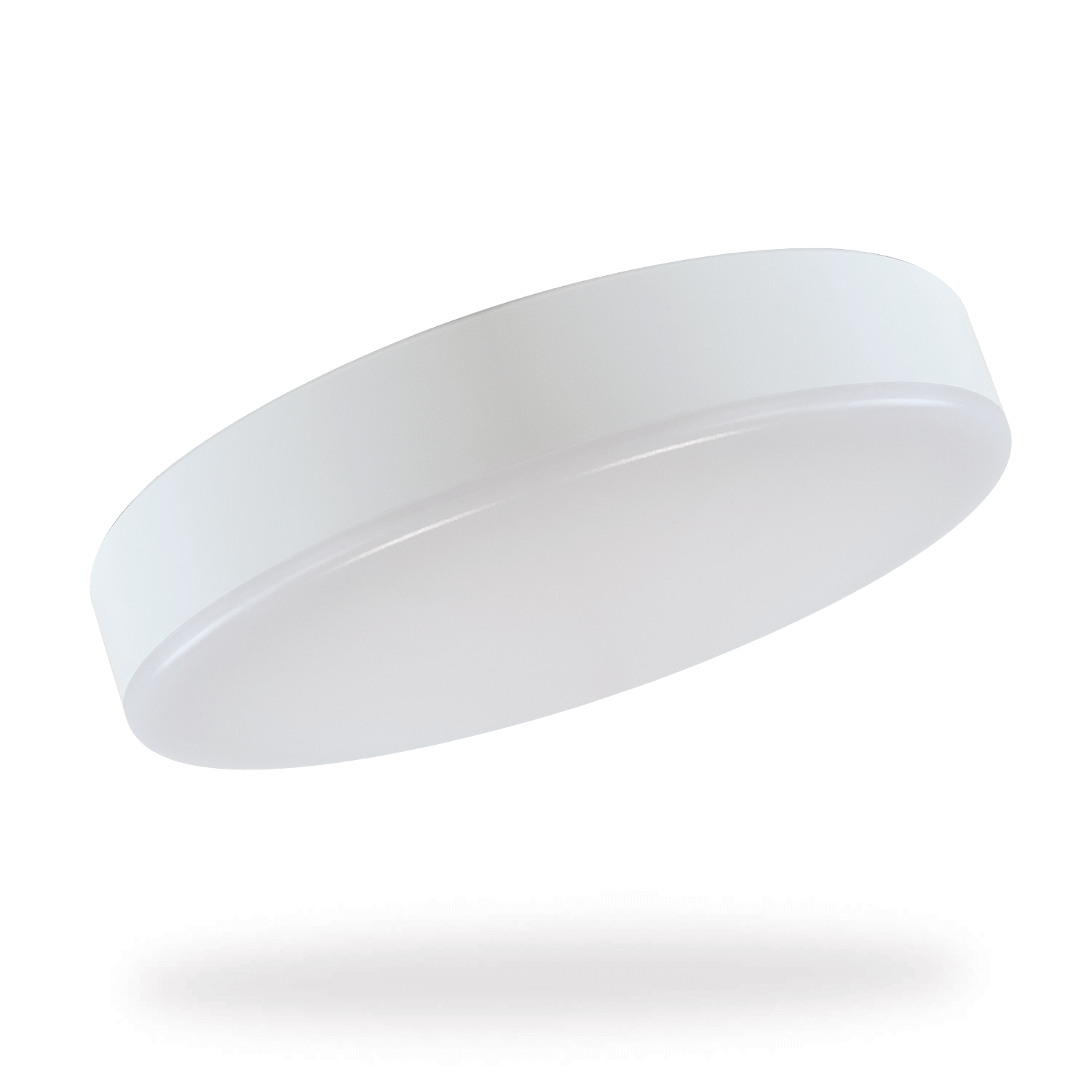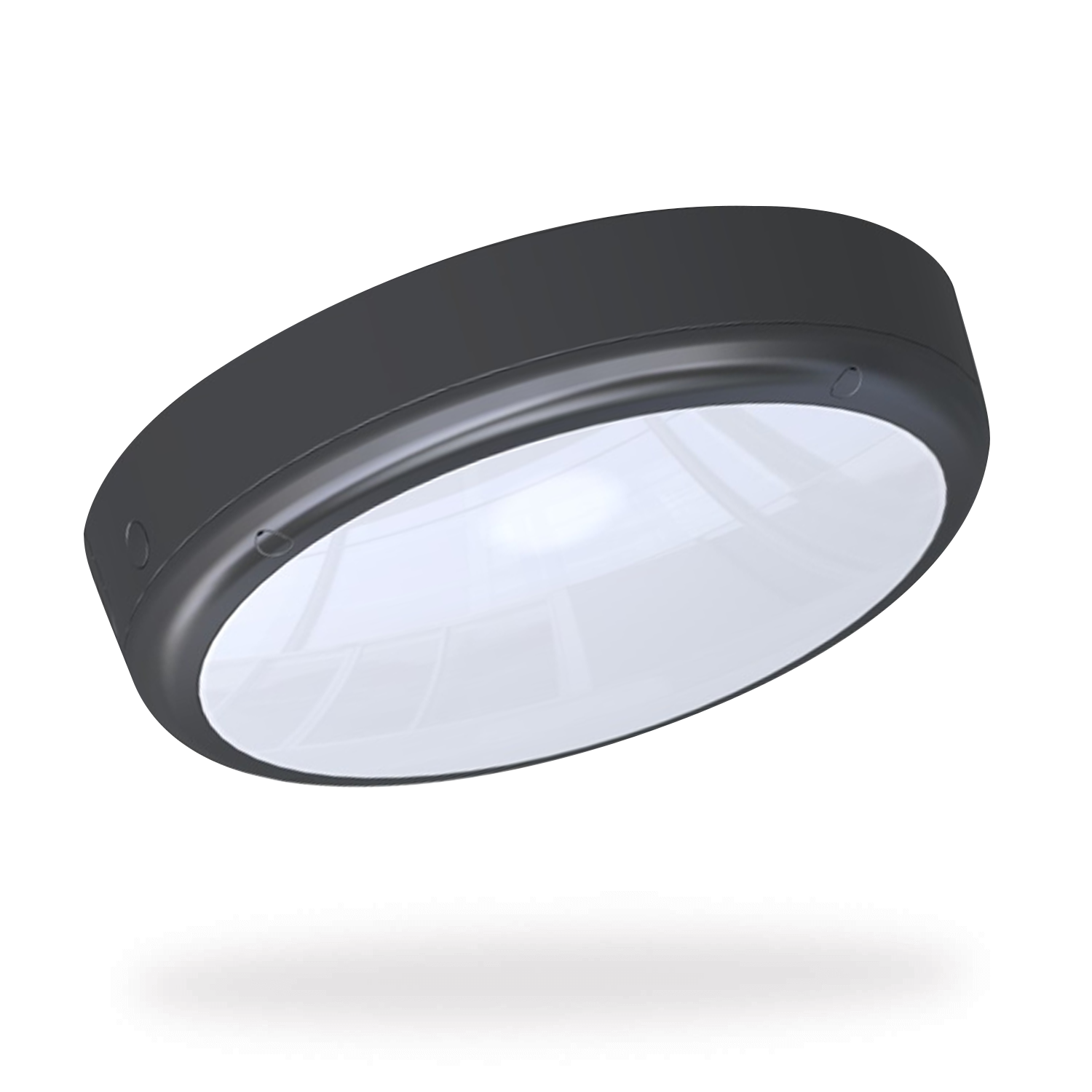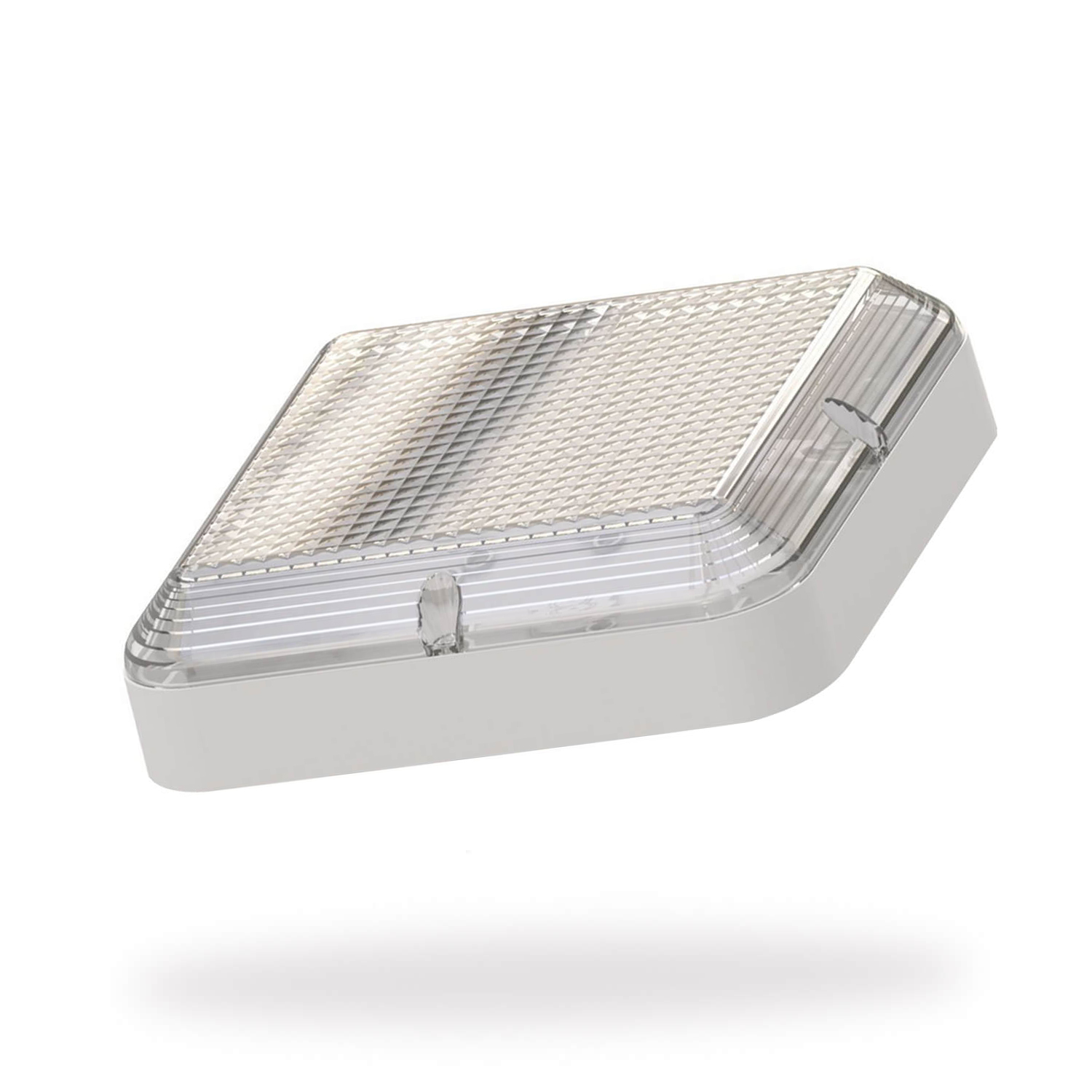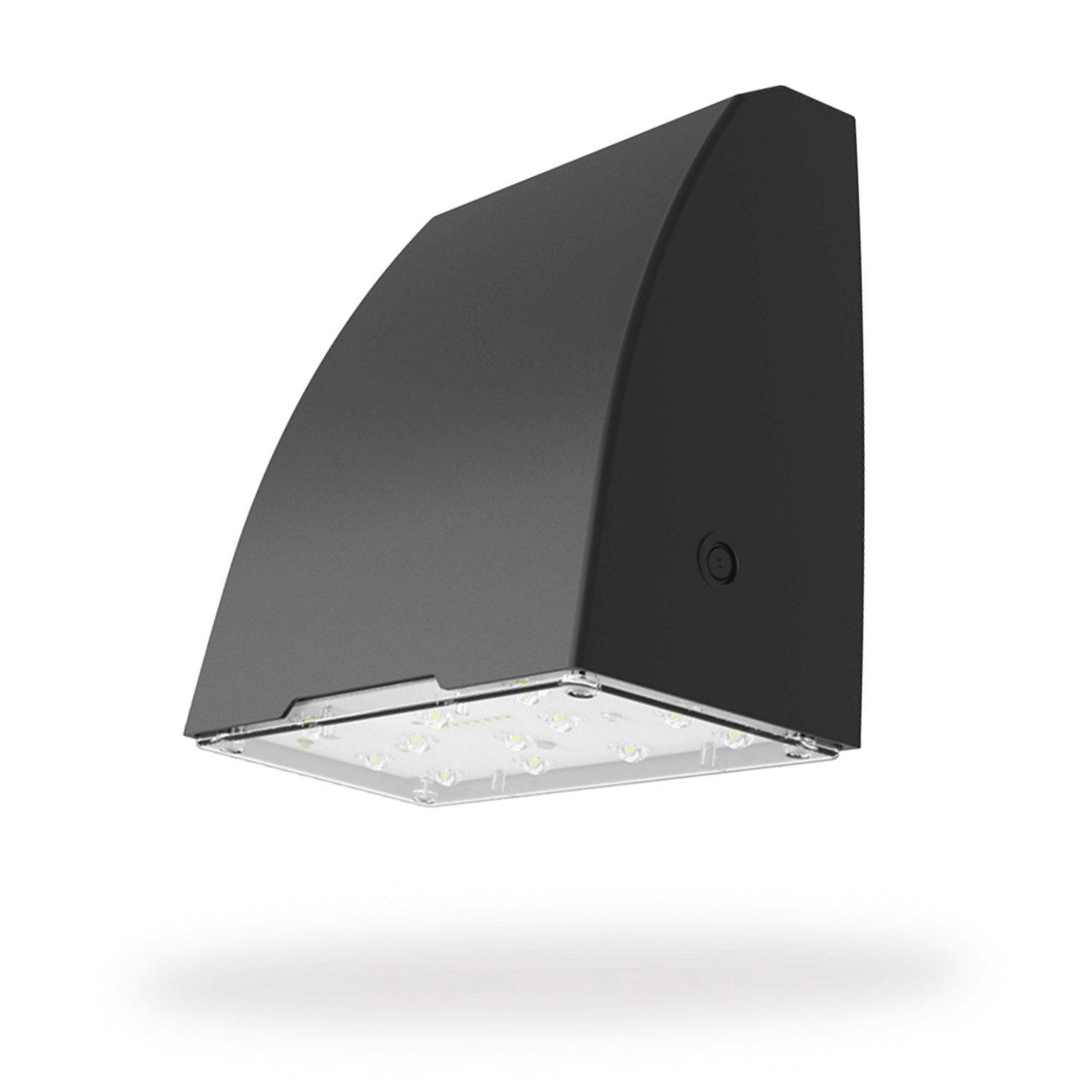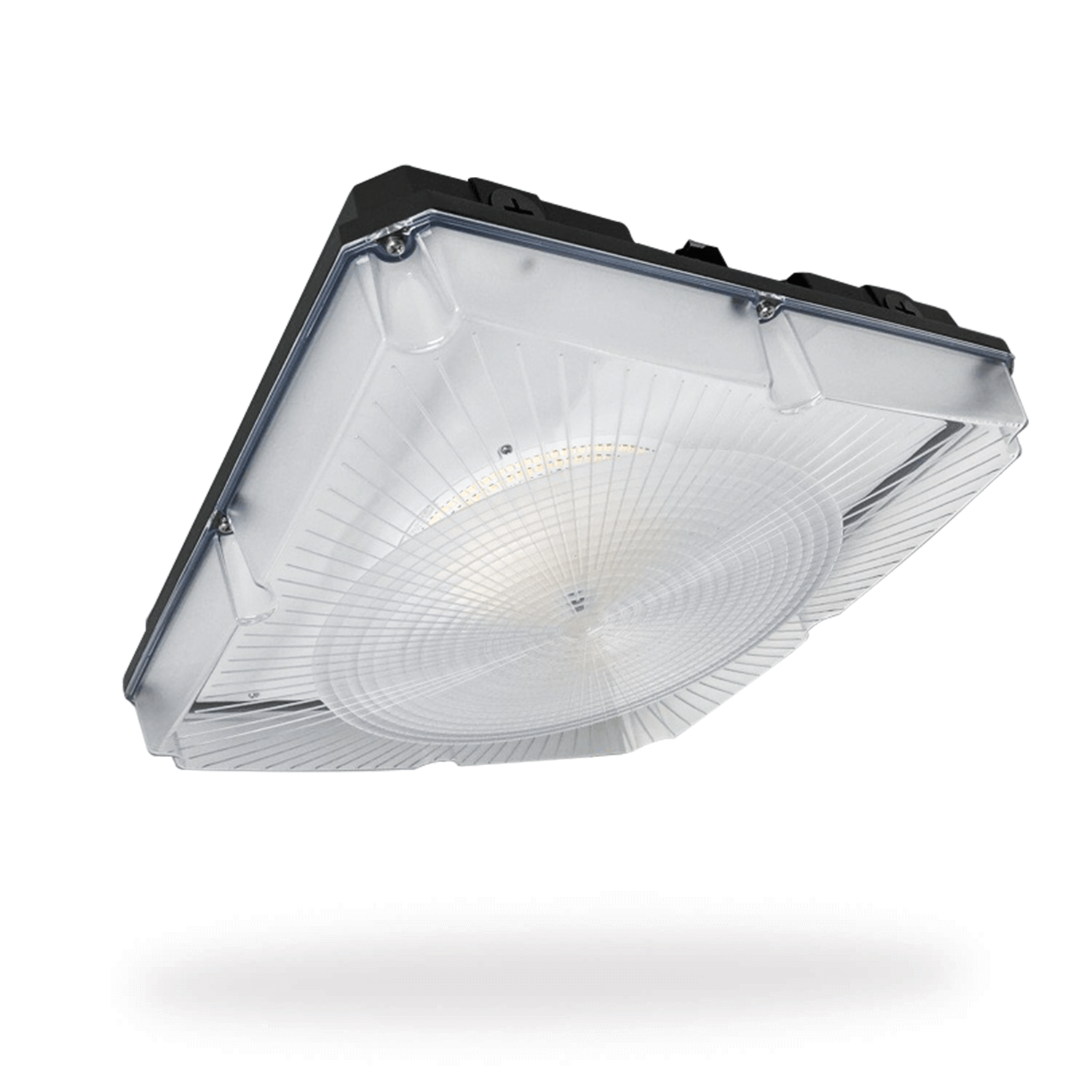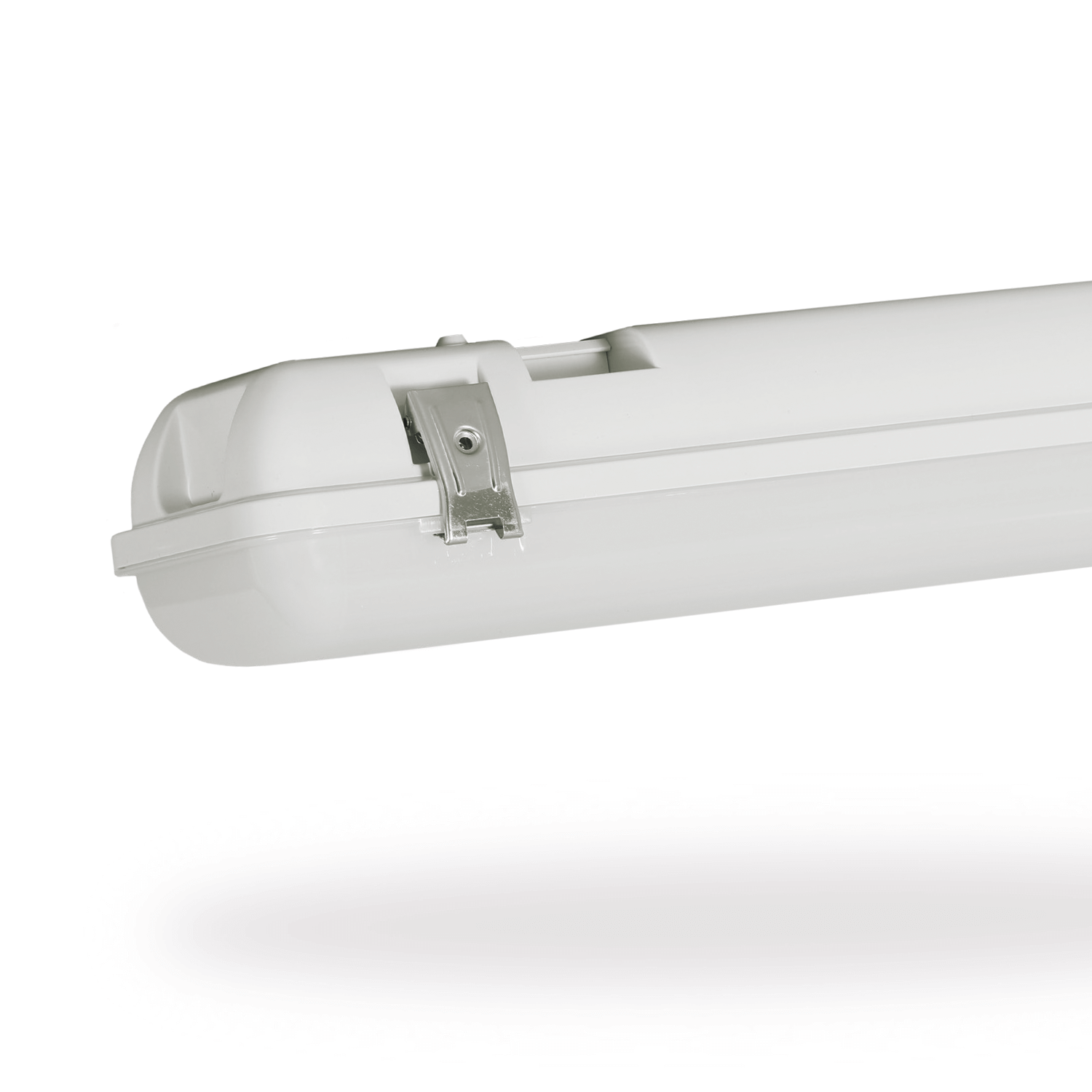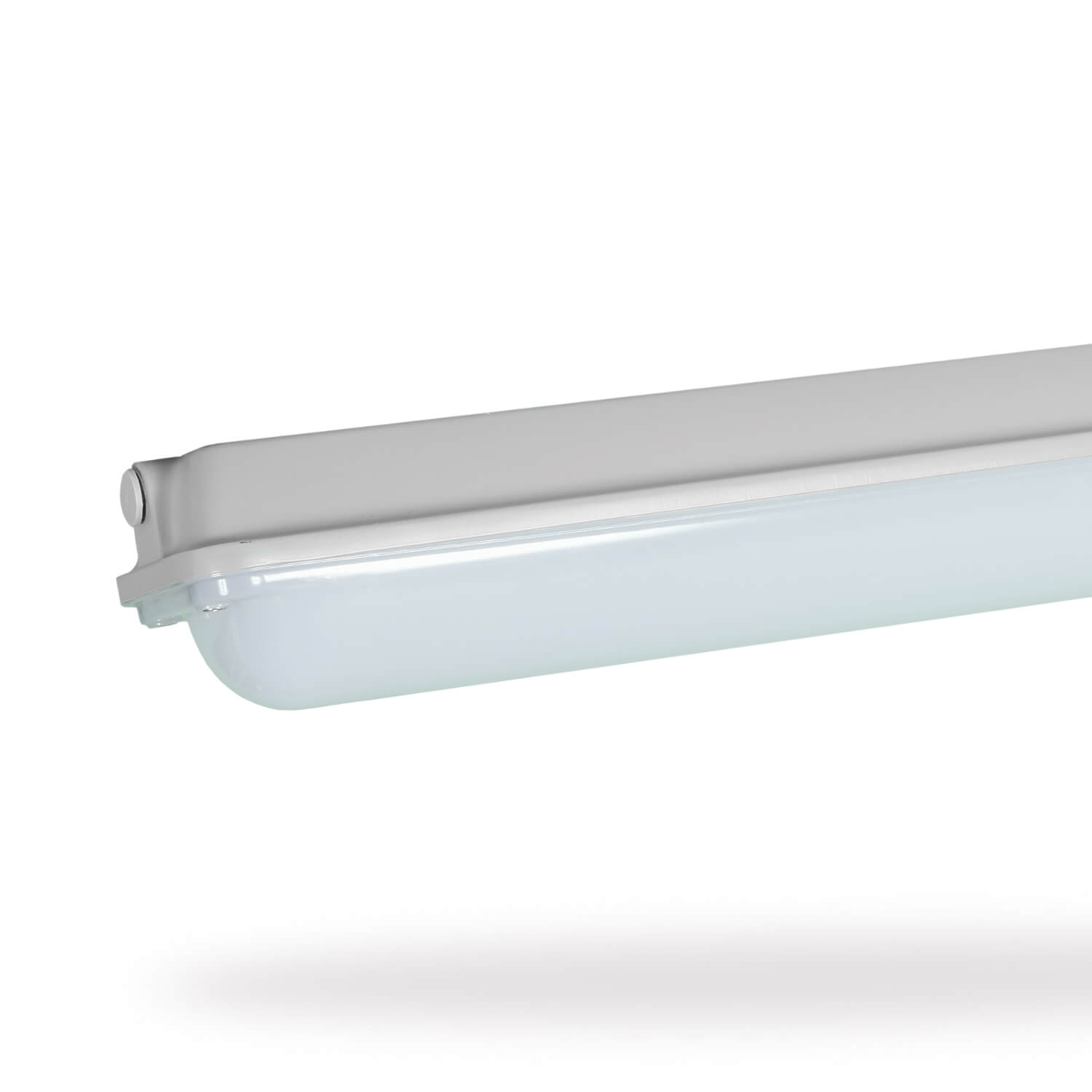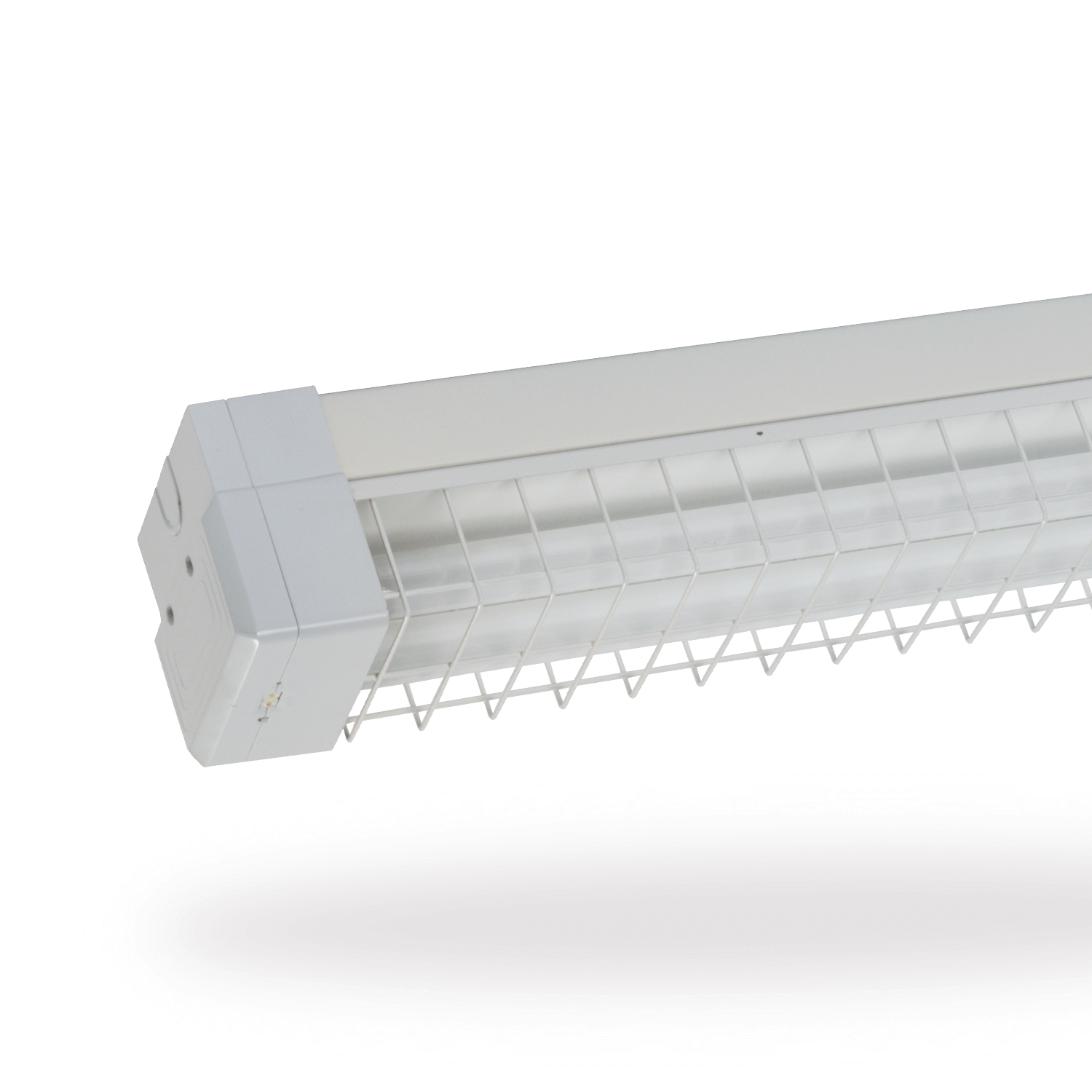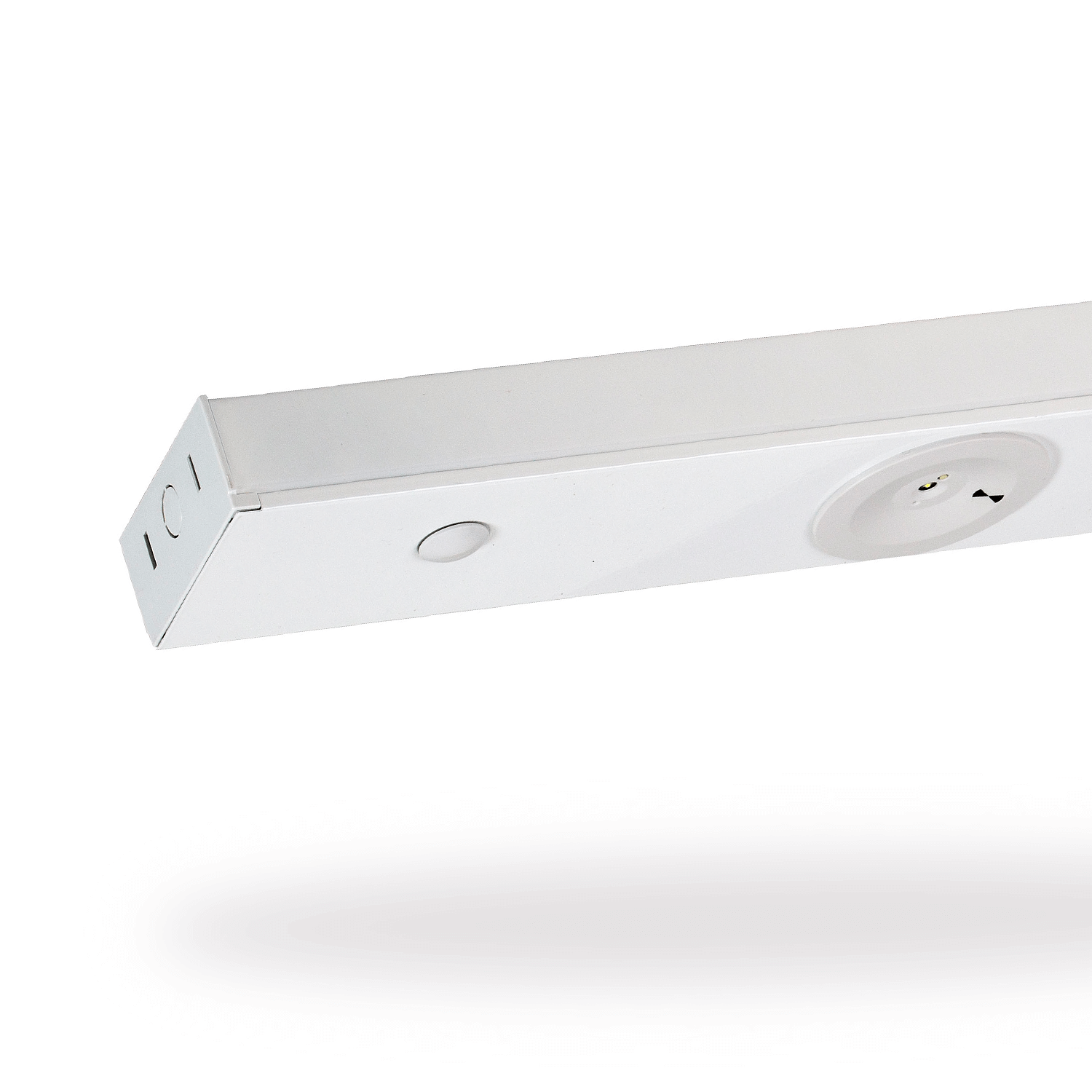The most advanced
emergency lighting system
If you’re planning to invest in an emergency lighting system upgrade in the next few years, it’s important to do your research first. There are a number of different systems on the market, but many of them lack the efficiencies available with recent technological advancements. Choosing a more advanced system could mean significant time and cost savings. And the right system could future-proof your emergency system since it won’t need replacing just a few years down the track.
So, let’s cover some of the major advancements and innovations that have impacted emergency lighting systems over the last few decades, and what technology you should look for in your next upgrade.
A brief history of emergency lighting technology
We’ve come a long way from the first emergency lights. From new batteries to computerised testing systems, here are some of the biggest moments in emergency lighting technology over the last 50+ years.
Advancements in battery systems
The first emergency lighting systems were run on a central battery system. Each building had a big battery bank and a fire-rated cable running to every emergency light from a central source. From the mid-1900s, many central battery systems were replaced by self-contained systems - although central battery systems still make up around 15-20% of the UK emergency lighting market today. The benefit of self-contained systems was that every fitting had a battery in case the power failed, although these were quite large batteries compared to what we have today. Plus, they were simpler to maintain, as specialist skills are needed to maintain central battery systems.
From the mid-twentieth century, we started to see more nickel-cadmium (Ni-Cd) batteries. These were smaller, more energy-dense, and could handle a lot more heat. This meant emergency lights and exit signs could be smaller and more compact. In the late 2000’s we started seeing Nickel–metal hydride (Ni-Mh) batteries. These started to replace the Ni-Cd batteries, but until recently, Ni-Cds were still very common. Ni-Mh had better energy density and better environmental credentials but were more expensive, initially at least. In the UK, we’ve seen Lithium Iron Phosphates begin to replace Ni-Mh batteries over the last five years or so. These offer even higher energy density and are much more environmentally friendly, with no toxic metals or carcinogens.
Introduction of LEDs
From the mid-late 2000s, we saw the introduction of LEDs - and they’re still changing lighting today. LEDs were a lot more energy-efficient and more environmentally friendly, which meant manufacturers could use smaller batteries to power the light fittings while supplying the same light levels. With LED lamps’ extremely long life (often 10+ years of use), emergency lights (especially non-maintained stand alone fittings) now last a lot longer before needing maintenance.
Computerised testing systems
The first computerised testing systems were used from the late 1990s onwards. These required each fitting to be connected via a data cable and were complex and expensive to install and maintain. Fortunately, a better solution was just around the corner. The Zoneworks system introduced in the 2000s (by Clevertronics, as it happens) removed the need for extra wiring or data cables by connecting emergency light fittings to a central controller using powerline technology.
More recently, manufacturers have begun to use Radio Frequency (RF) systems to wirelessly connect emergency light fittings to the central controller. Although limitations on RF within buildings meant a number of backbone hardware devices still needed to be installed between fittings, adding complexity and cost to the installation process. Let’s talk about the most recent advancement in emergency lighting systems - DSM meshing technology.
Introducing Dynamic Self-Managed (DSM) meshing technology
The most recent technological advancement for emergency lighting systems is Dynamic Self-Managed (DSM) meshing. Mesh networks have been used in a number of different applications since the late 90s, but it’s only in the last few years that we’ve seen this technology used in emergency lighting. So, how does it work? Let’s break it down.
Wireless connection
The infrastructure nodes (in this case, the emergency light fittings) connect directly and wirelessly with surrounding nodes using the RF system.
Self-organising and self-configuring
The devices cooperate together to dynamically create the network and find the most efficient route to send data back to the controller. It means the nodes aren’t dependent on any one path or failure point (like the wired system) and because they’re self-organising, they configure themselves once they’re installed. Plus, self-configuring means the system is much quicker to get up and running.
Mesh network
The combination of RF and meshing minimises the backbone and hardware devices required to transmit data. With DSM meshing, each controller is connected to a “mesh” of up to 1000 emergency light fittings. Other RF systems (without DSM meshing technology) typically only manage a maximum of 250 devices per controller, which makes installation more complex and expensive.
Self-managing
Self-managing allows the system to maximise the efficiency and usage of limited resources. You might have a network of 1,000 fittings, with 40 channels they can choose to communicate across. In earlier generation systems, they might use all those channels up very quickly, which then limits the amount of data they can transmit and then slows down the entire system. But when your system is self-managing, the devices manage their frequency and only use enough power to transmit data to its closest neighbours. Other devices elsewhere on the network can reuse the same channel, which means you can increase the bandwidth exponentially.
Dynamic
The system automatically runs diagnostics to find the best possible pathways back to the controller, and will use different paths depending on the conditions. For example, if you lose a fitting because someone accidentally smashed it while moving furniture between rooms or throwing a ball inside (it happens), the network will find another way back to the controller. Since each device is able to talk to at least two other fittings in multiple directions (depending on how your emergency luminaires are spaced), the network has built-in redundancy.
Synchronising
You could have hundreds of devices talking at the same time and automatically synchronising their communication so that a huge amount of information can be sent back to the controller almost instantly. This makes testing, monitoring, and maintenance extremely efficient.
Tip: The best way to understand this is to imagine a restaurant where everyone talks loudly at the same time - it’d be chaotic and you’d probably struggle to make out a single word! But if each person uses enough volume to communicate with the people at their table, people can successfully have conversations and understand each other. DSM meshing technology works in pretty much the same way. The devices choose what frequencies they broadcast on and how strong they broadcast their signal so that they can efficiently communicate data without talking over each other.
So, how do you get DSM meshing? In 2020, Clevertronics brought this technology to the UK emergency lighting market for the first time through the XT HIVE system.
XT Hive is the latest upgrade for Zoneworks. It uses the RF backbone, combined with the unique DSM meshing system to minimise hardware and efficiently transmit data and control the system. It’s the most advanced emergency lighting system on the market. With a simplified backbone, it’s so much easier to install, use, and maintain emergency lights on a whole range of facilities - especially large, distributed, or complex sites.
Every device contains one of our XT HIVE nodes, which then forms part of a Dynamic Self-Managed (DSM) meshing network. Our technology formulates the mesh network once the devices are powered. They look for each other and form colonies, then all try to find their pathway back to the controller via the most efficient route, so that information can flow from the controller and back into the network.
Why we chose HIVE
We spent years evaluating other RF technologies before we found one that would ultimately deliver a superior outcome to the powerline technology we were using. It’s not that the existing systems were bad - a lot of them worked great and were very reliable. But we wanted a solution that would reduce the amount of hardware and infrastructure needed to distribute data within the system.
Most other RF-based emergency lighting systems are set up so that the controller manages its own mesh network. But we found that with one controller managing the network, rather than hundreds of nodes self-managing, it limited bandwidth and slowed the system down. We were looking for a solution that was quick and dynamic, and would provide massive value to our customers.
Some other technologies we looked at included ZigBee Pro Bluetooth, LoRa, and Sigfox. We found these options were best for wide area networks because they had a lower data rate, used more power, and operated at lower frequencies. They’re ideal for Smart City applications - things like street pole management, toilet block checking, and bin level checks. But they’re not so great inside a building where there’s a high density of fittings and you potentially need to transmit across 30 storeys. This technology can’t deliver a solution where your controller can talk to every fitting in the building simultaneously - which is crucial for speed and efficiency.
In the end, XT HIVE was the only logical choice. Although it does a lot of the same things as our earlier systems (including automatic monitoring and testing), there are key differences and advantages:
- Performance - Compared to others on the market, the system is much faster to test, monitor, and maintain (because the 2.4GHz network we use is so fast, we actually have to throttle it!)
- Minimal hardware - Fewer controllers (typically a big ticket item) and a totally wireless system means lower upfront costs and faster installs
- Speed to install - XT HIVE is a simpler system, which means it’s faster to design and much faster to install and commission
- Lower costs - Less hardware and better efficiency means lower costs, both upfront and ongoing
- Improved reliability - Because there are thousands of paths back to the controller, there’s no single point of failure in the network
- Easier to set up - Because it’s self-managing, the system configures itself in just a few minutes
- Lightweight - On most sites (with up to 1000 devices), all you need to manage the system is a single controller and a computer
Overall, the system delivers improved outcomes for our customers across all areas, including design, installation, testing, maintenance, efficiency, price, and performance. At the moment, there’s nothing else on the market that compares.
What’s possible with HIVE?
As you can imagine, HIVE makes emergency lighting systems easier to install and manage for a whole range of applications. But it especially stands out for a few scenarios where simplicity, speed, flexibility, and connectedness is key.
Incremental upgrades
Because the technology is self-managing, you can easily upgrade your system in phases. The installer can place the controller in and install emergency lights section by section, or area by area. As long as the devices can establish a pathway back to the controller, the network will continue to build itself as each new phase is installed. This is ideal for facilities where you can’t afford to upgrade your entire emergency lighting system all at once, or where you’re upgrading a facility in stages.
Campus solutions
If you have multiple campuses (e.g. schools, universities, hospitals, nursing homes), the RF technology makes it easier than ever to link them together. With HIVE, you can connect your campuses together and control, test, and oversee all your emergency lighting devices in a single place.
Heritage listed buildings
Upgrades can be tricky in existing buildings, but especially older, heritage-listed ones. That’s because you may not have the full picture on existing wiring and getting permission to alter the building is often a complex process. HIVE is ideal for these buildings because it requires almost no intervention or wiring.
24/7 facilities
Some buildings and workplaces never shut down - like hospitals, shopping centres, and apartments. Upgrading electrical components in these buildings can be complex if you need to shut down the entire electrical switchboard. No matter how carefully you try to schedule the shutdown, you’ll still disrupt a lot of people. Fortunately, because HIVE allows you to do a staged upgrade, you never have to turn off the whole electrical switchboard to do the installation. You only need to turn off the local circuit of lights, which means you’ll only impact a small number of occupants at a time, and only for a short period as you change over the emergency light.
What’s the future of emergency lighting systems?
XT Hive is the latest improvement in the emergency lighting space. It follows the trend towards IoT (Internet of Things), where you can have hundreds of thousands of devices on a single network that intercommunicate. HIVE is a very simple application of the technology, but it’s one of the most sophisticated emergency lighting systems on the market. But emergency lighting technology will continue to evolve and we expect to see a focus on three key areas over the next decade or so:
Dynamic signage
Dynamic signage can direct people to the safest or most correct route. For example, in the event of a building fire or a security incident where you need to direct people away from danger. In this case, your signs might include other elements alongside the typical green running man. You might also have flashing LEDs that draw more attention to the exit, or invisible red “X” marks on the exits where access is blocked off. These are illuminated when instructed to do so, where egress is blocked or carries a high risk.
Directional sound
Directional sound is also being used in some emergency lighting systems to draw people’s attention and help them find their way to the nearest exit using audible cues. This is useful in shopping centres and places with a lot of visual clutter, or emergency situations (like a fire) where visibility is impacted. Because people can follow the sound out, they can move faster and more confidently in the right direction, while looking out for obstacles that could be in their immediate path.
Smart sensors
While automated emergency lighting testing is already available today, we’ll likely see smart technology used in other aspects of the system, too. Down the track, as more building network systems are installed and interconnected, they’ll start to use each other’s networks to locate people and identify how many people are in the building. This information will be critical in emergency situations, ensuring first responders can more efficiently find people who need help.

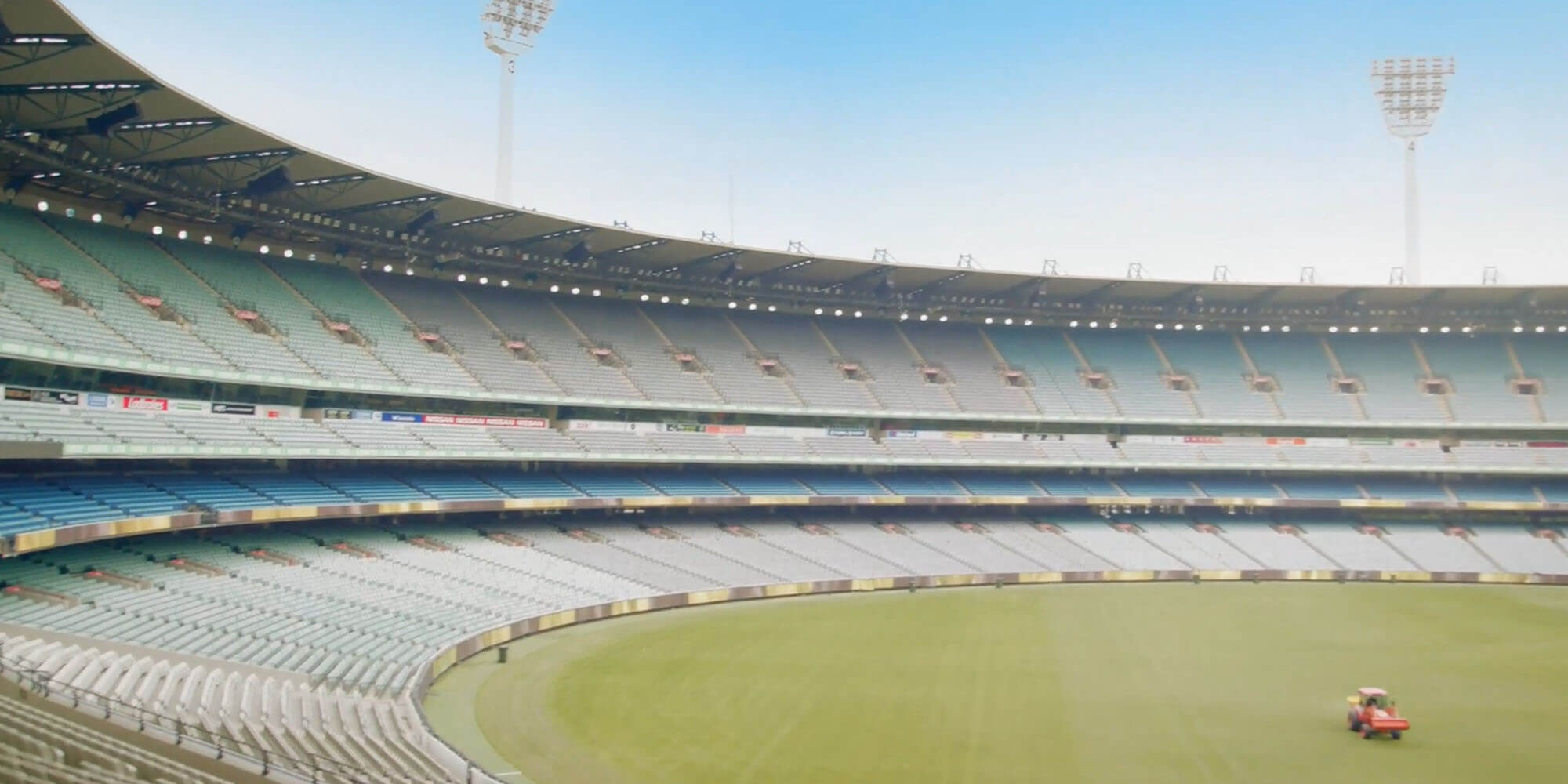
Ready to get started?
Ready to upgrade your emergency lighting system? Zoneworks’ XT has over 1,000 sites installed across Australia. It’s not just the world’s most advanced emergency lighting system - it’s also cost effective, with minimal backbone installation and automated testing and maintenance logs. Contact us to find out more.



